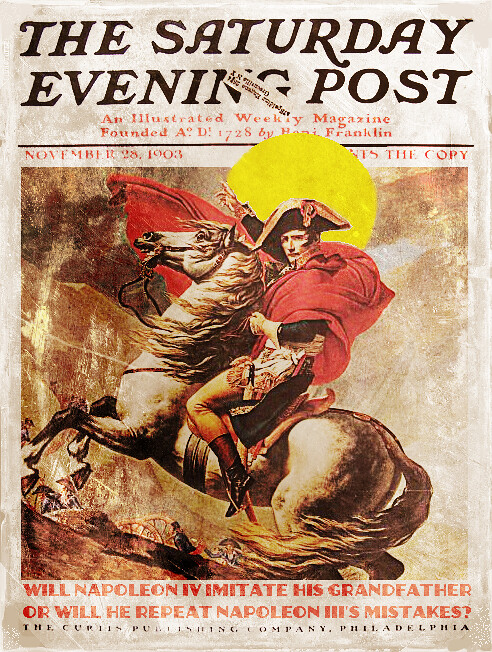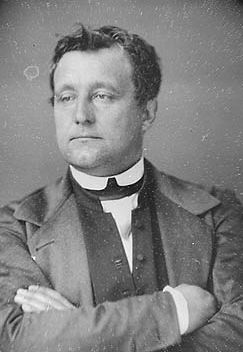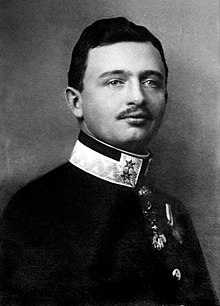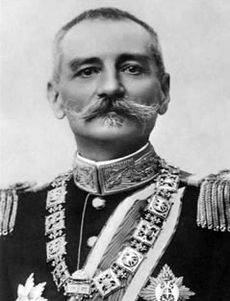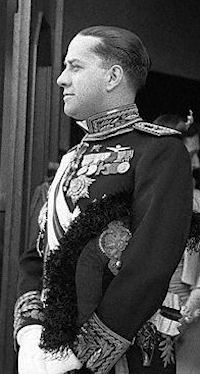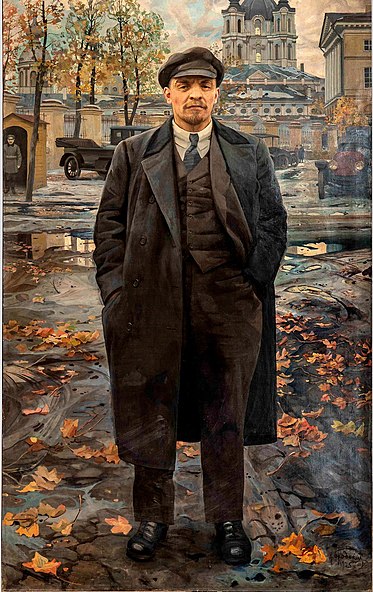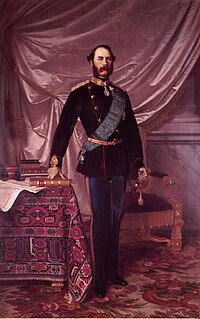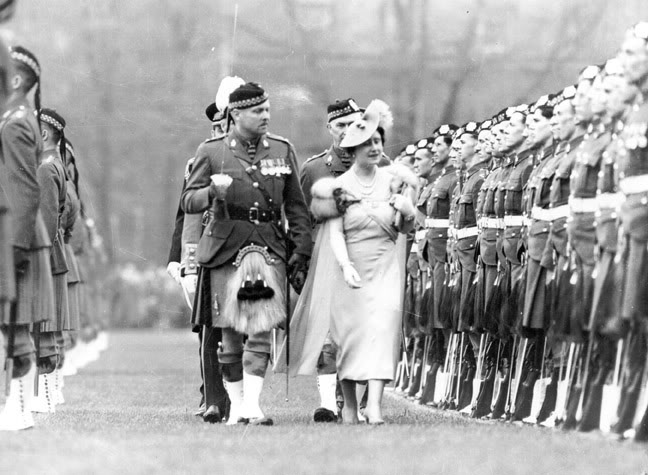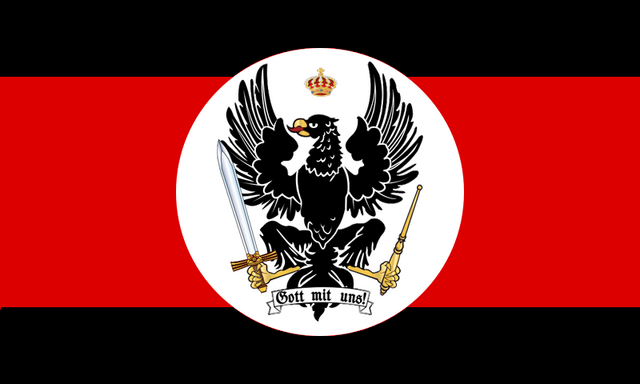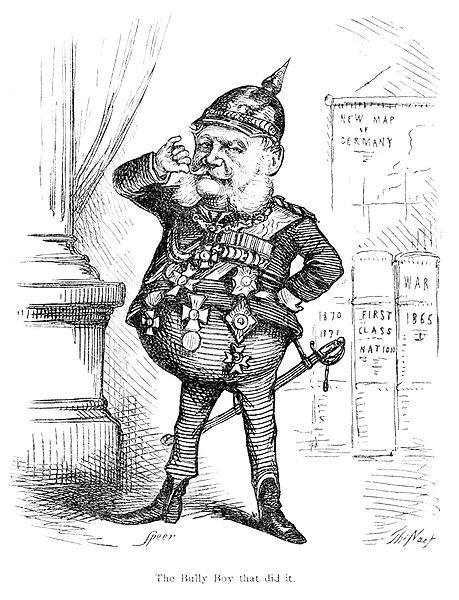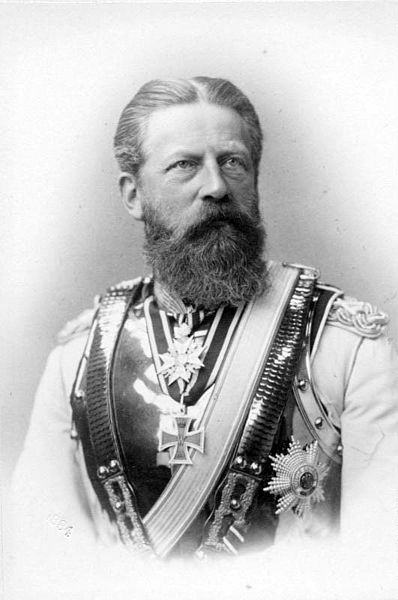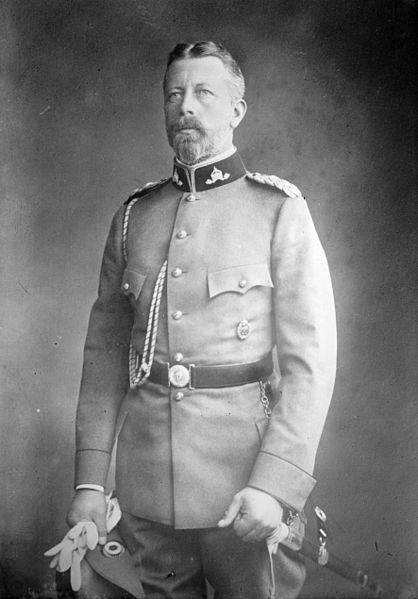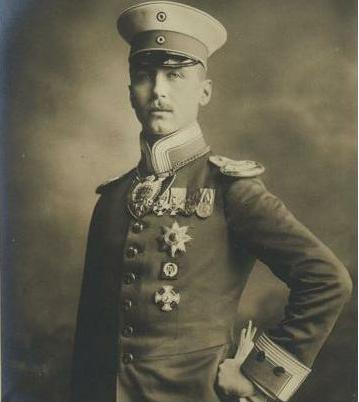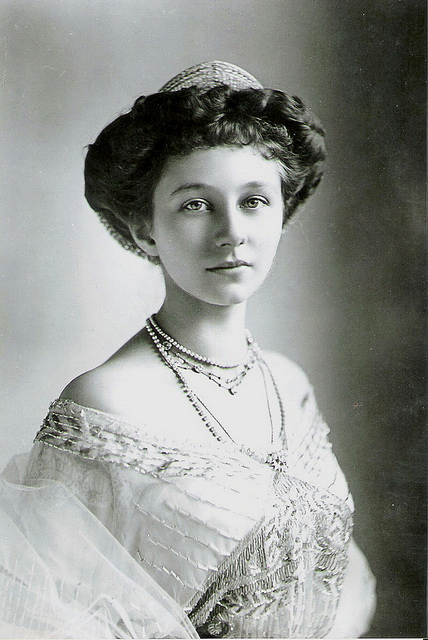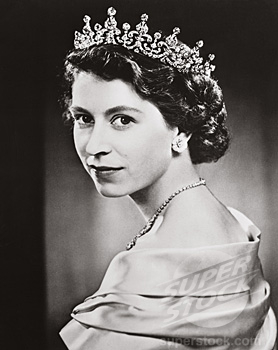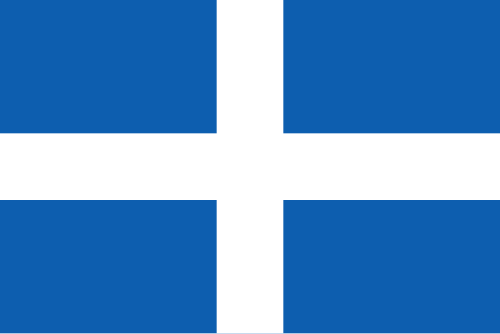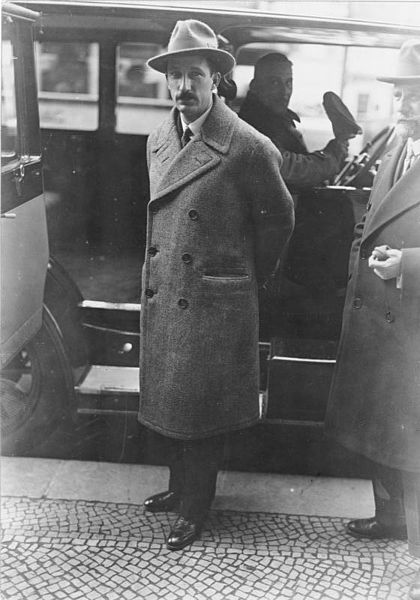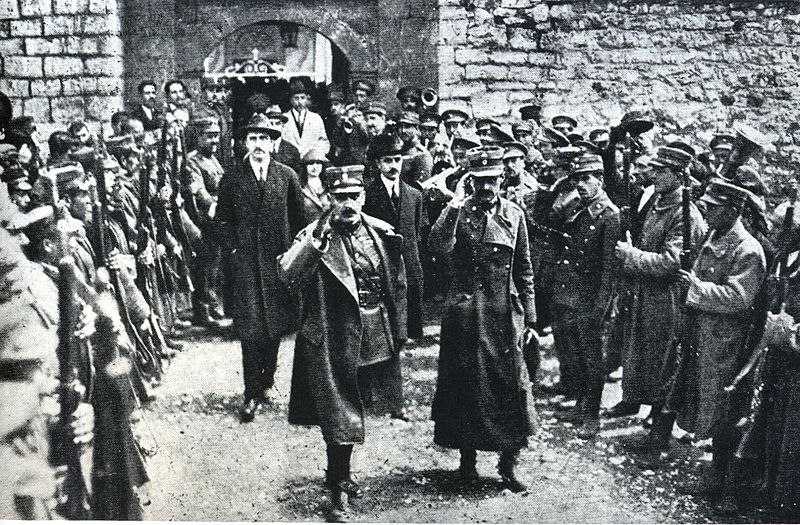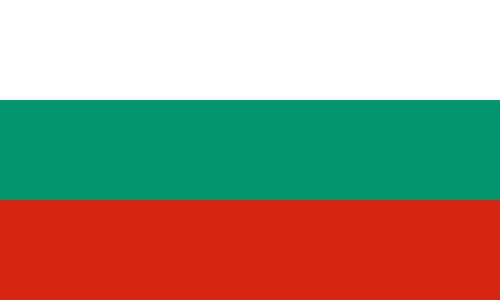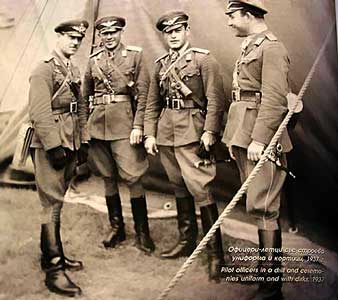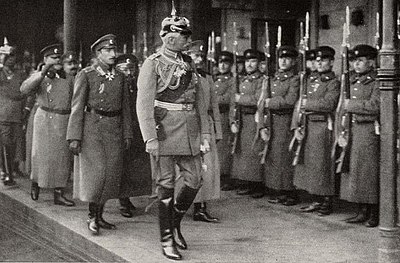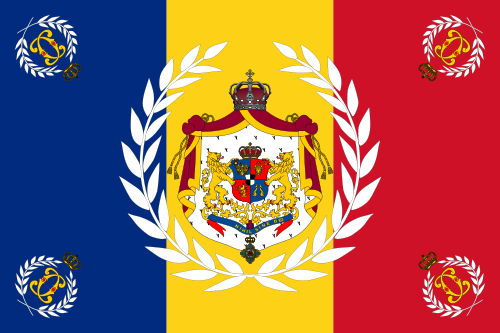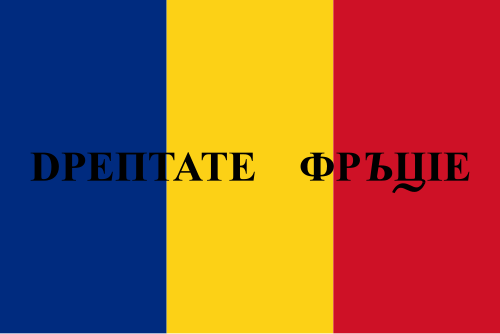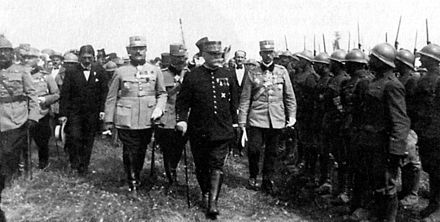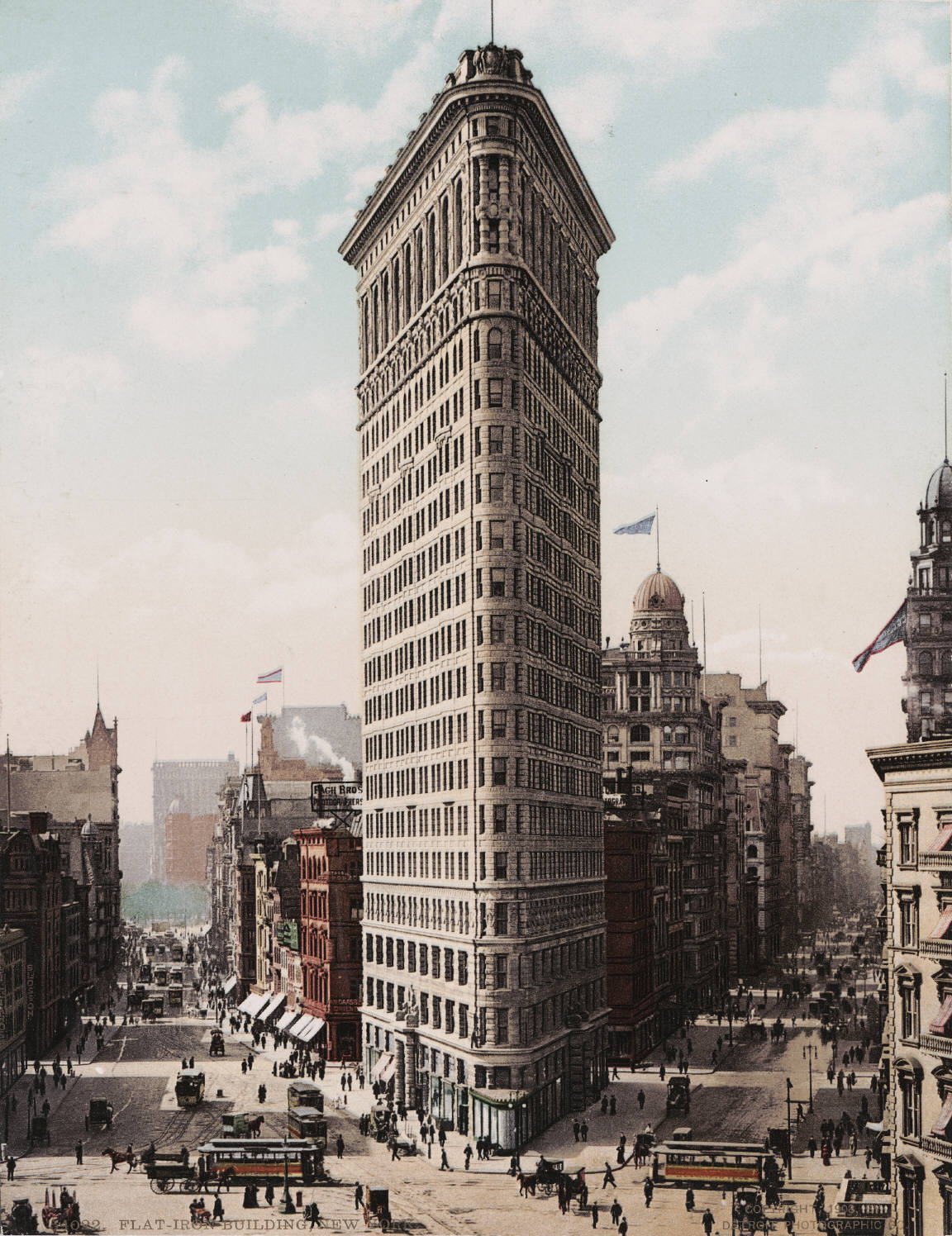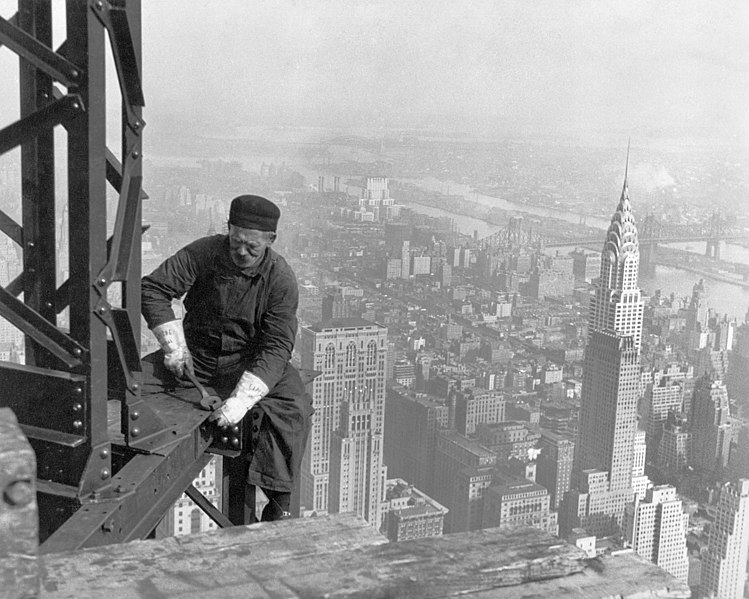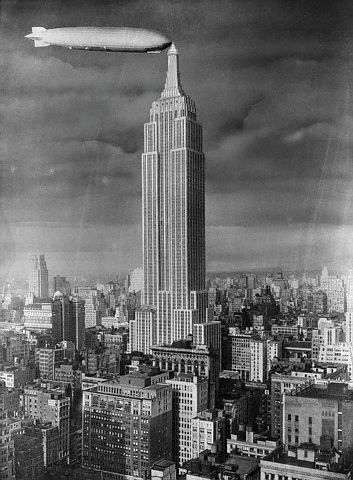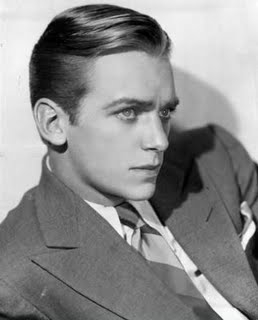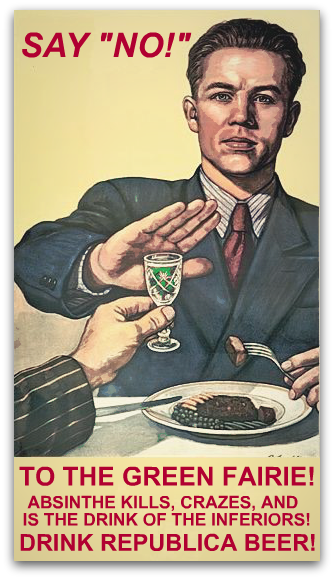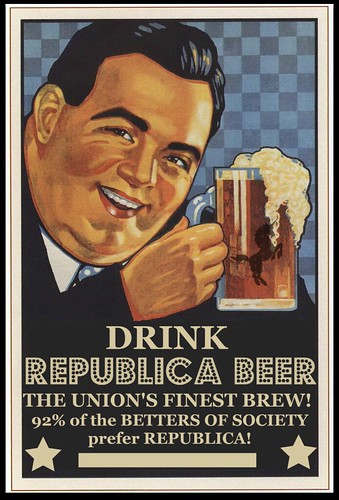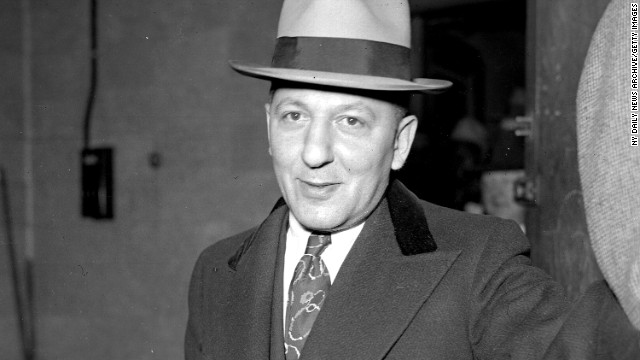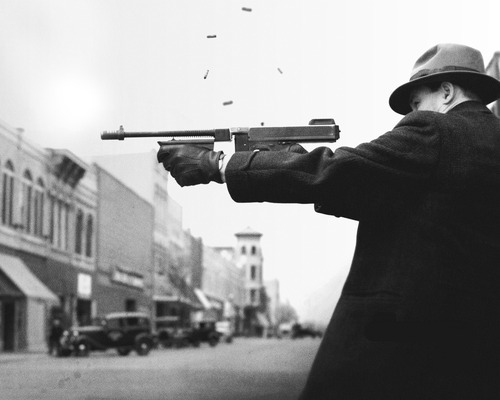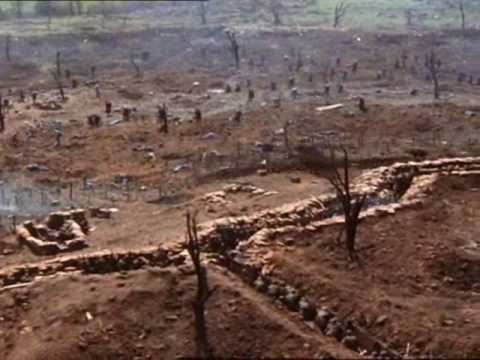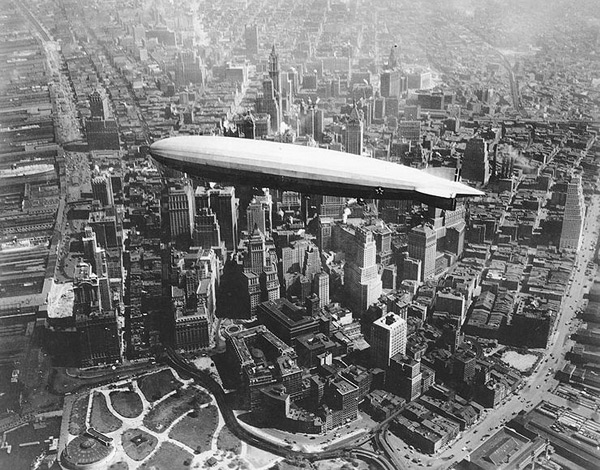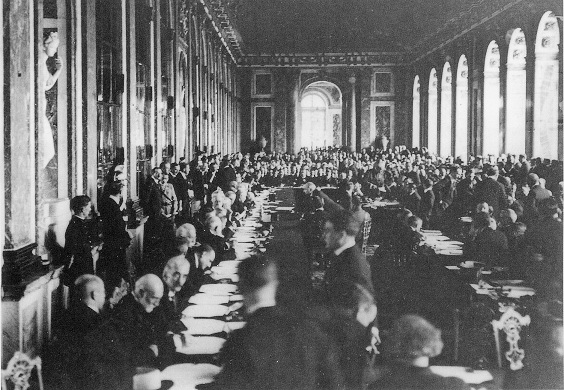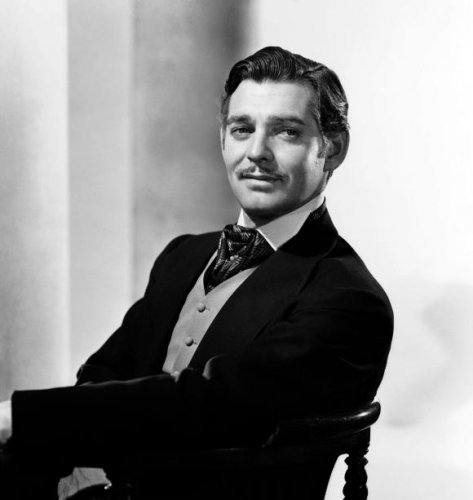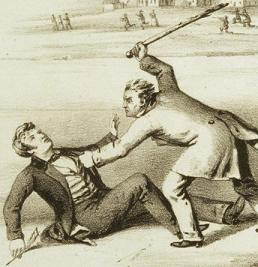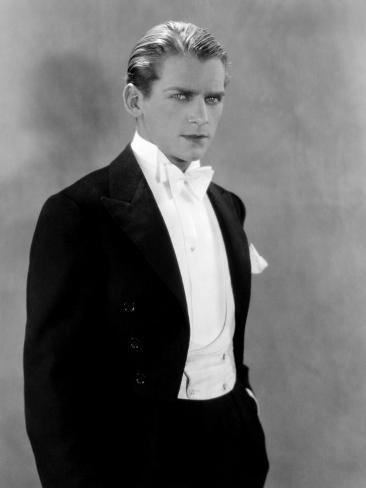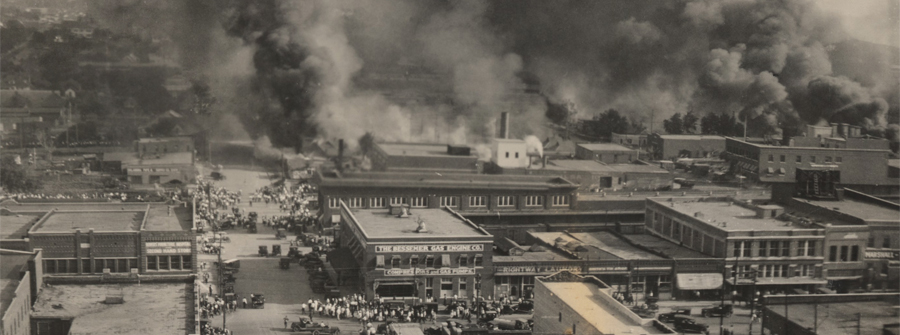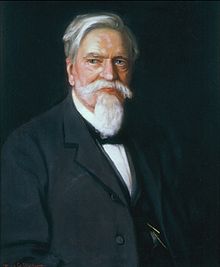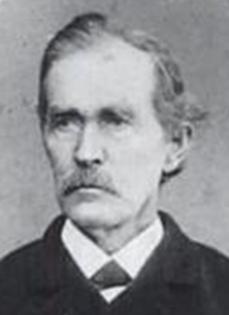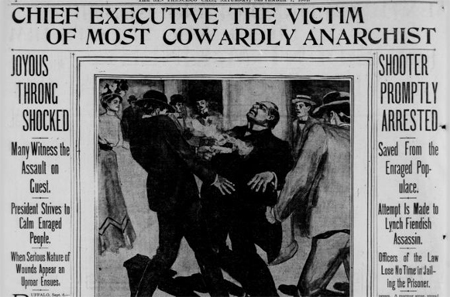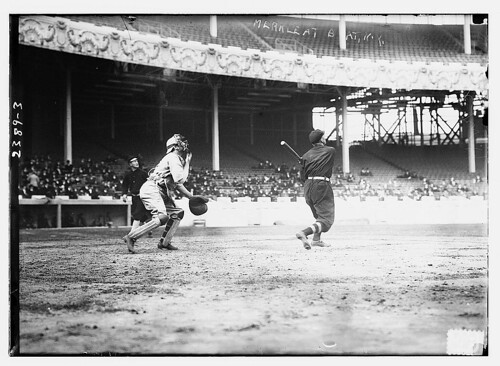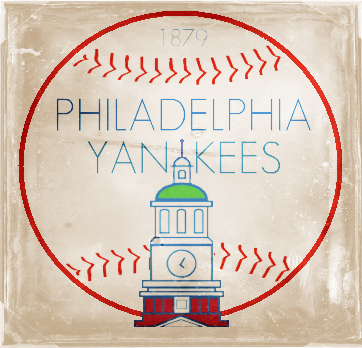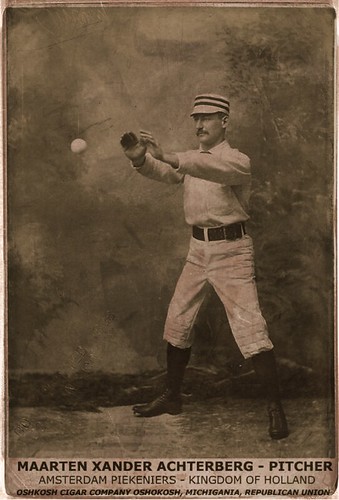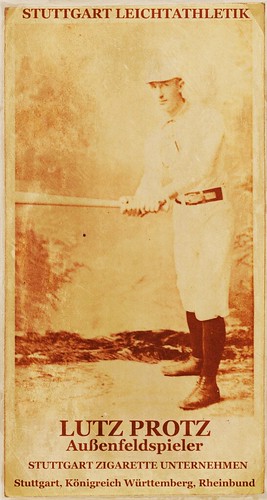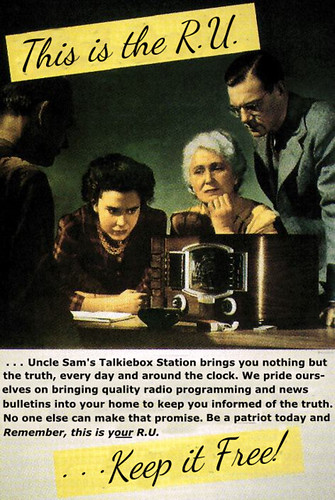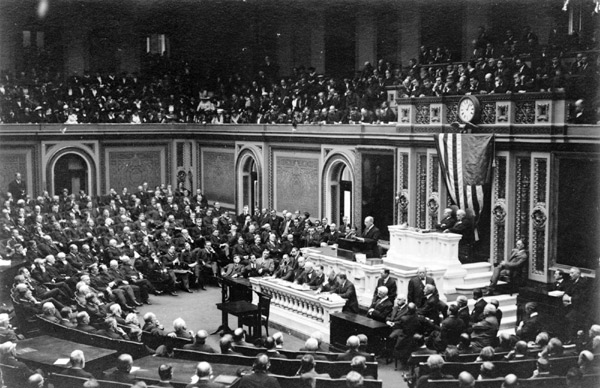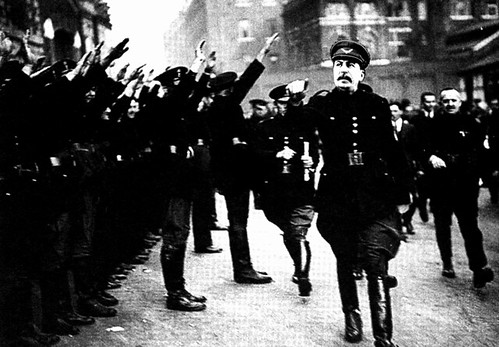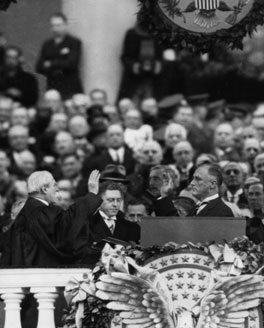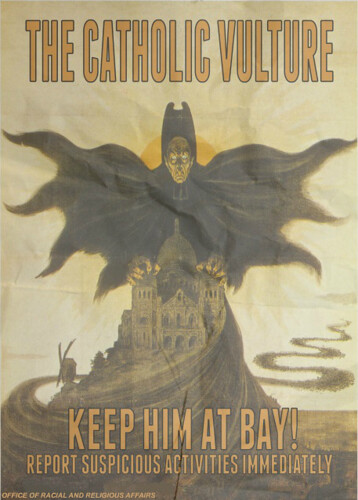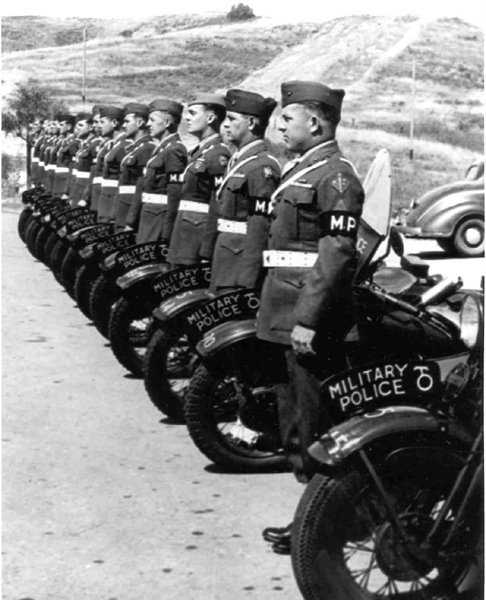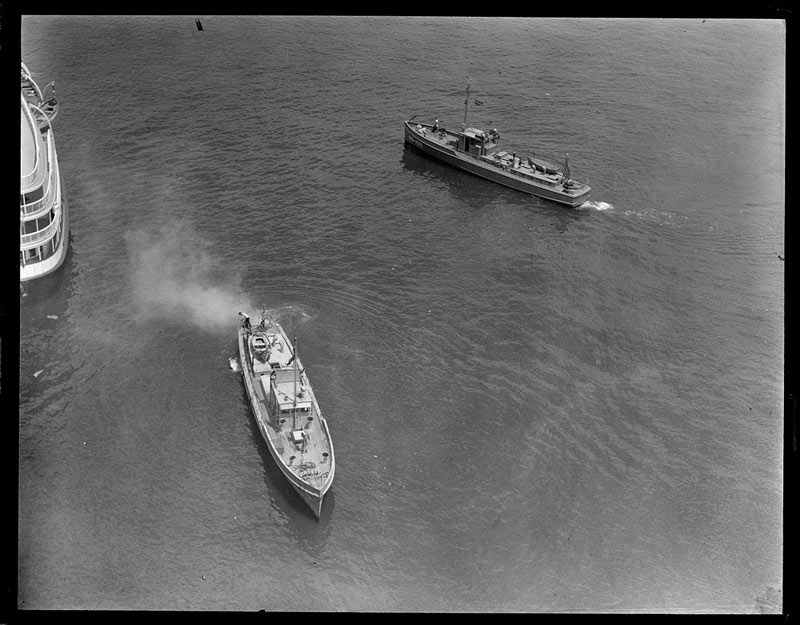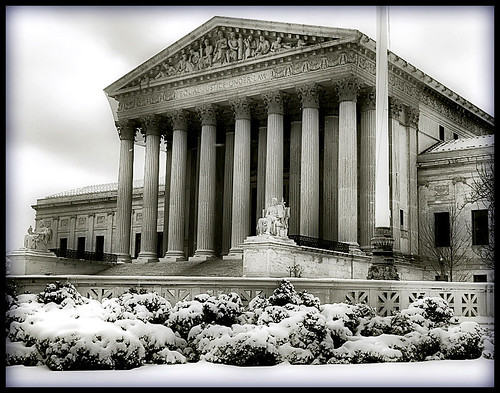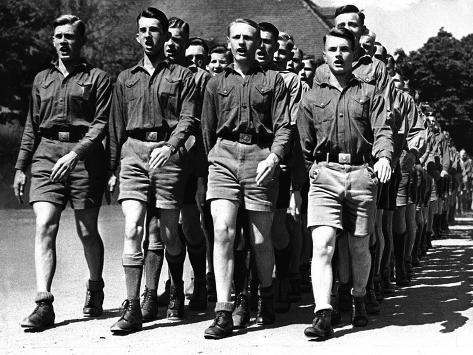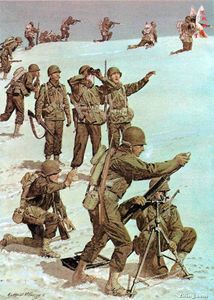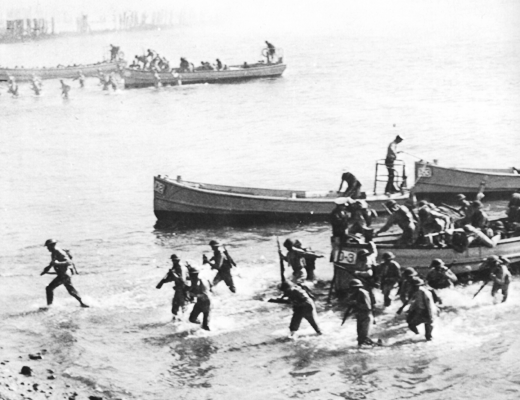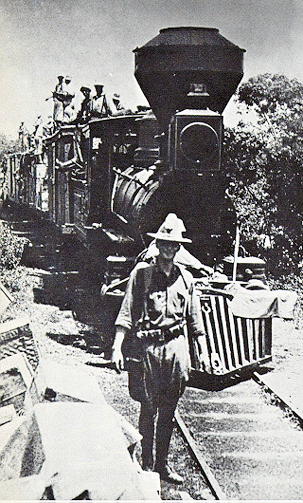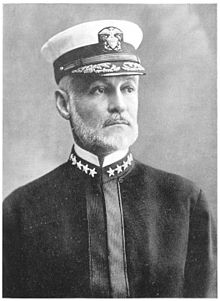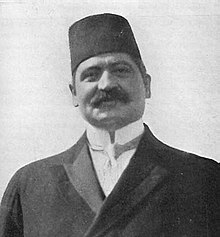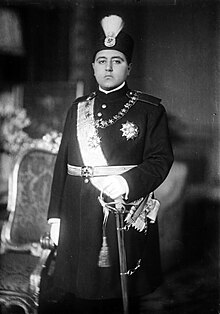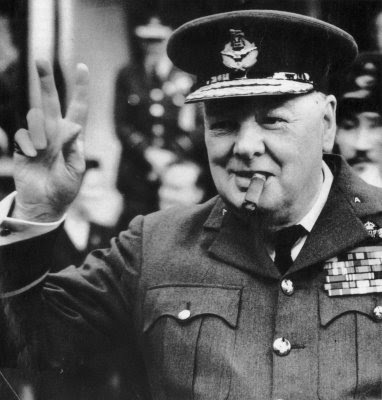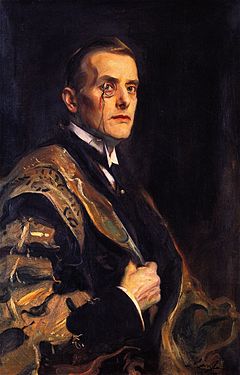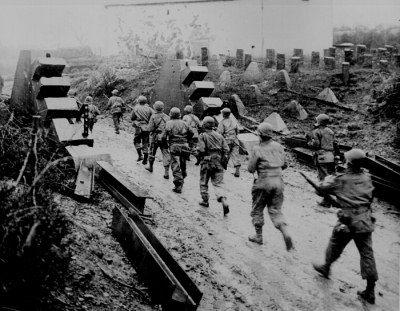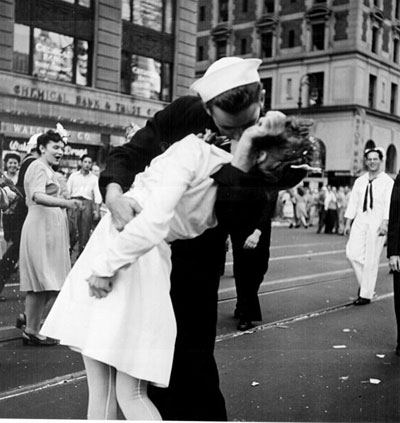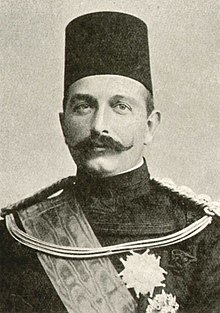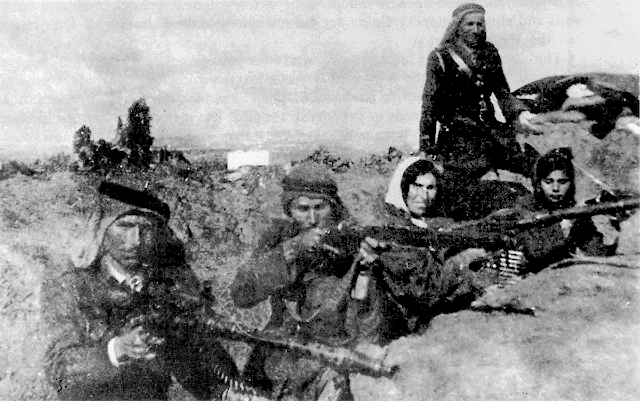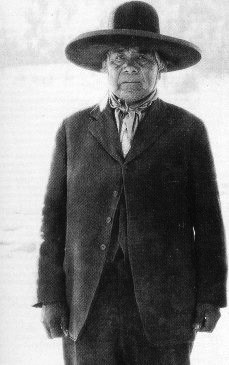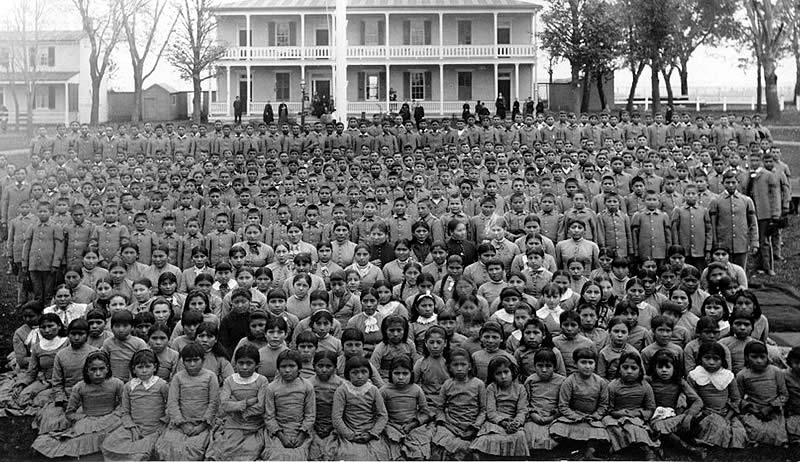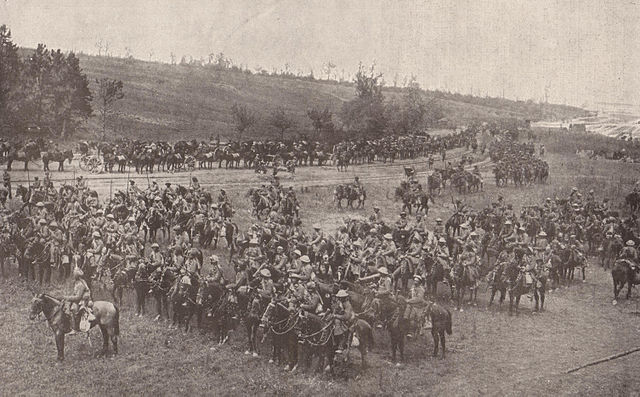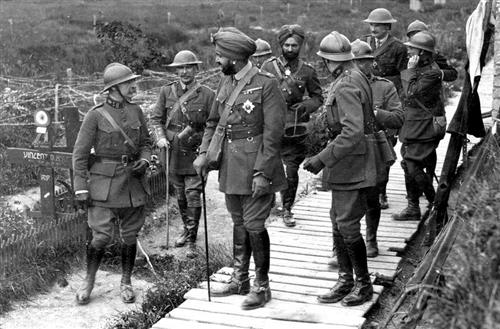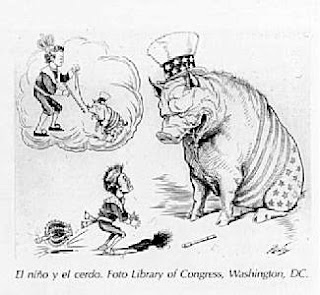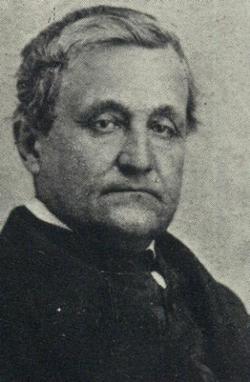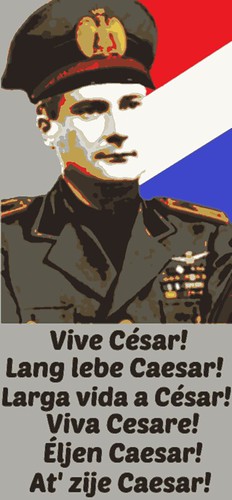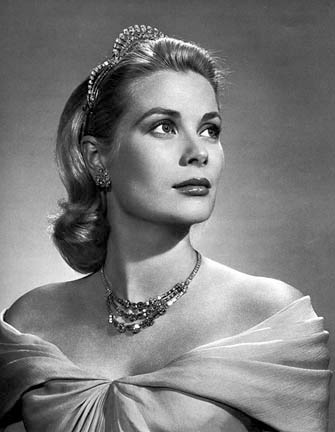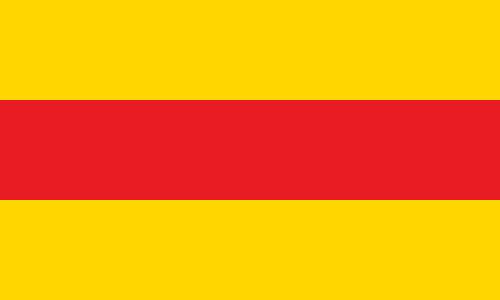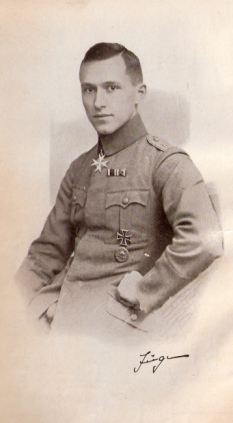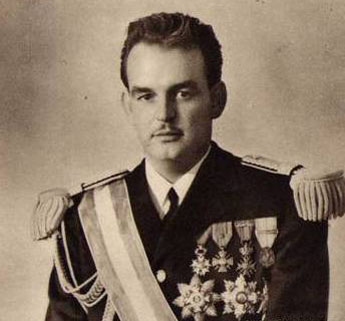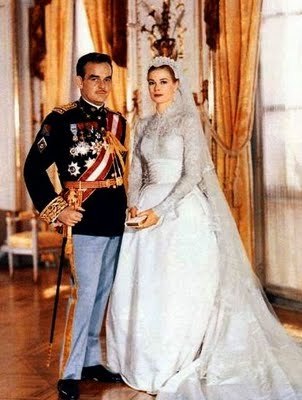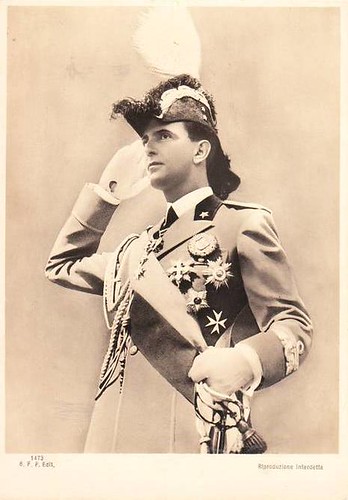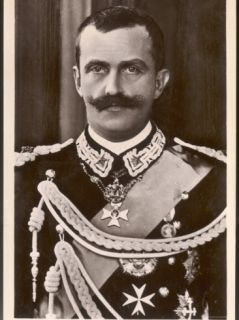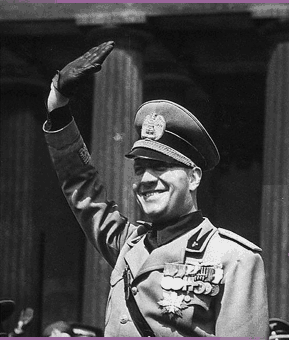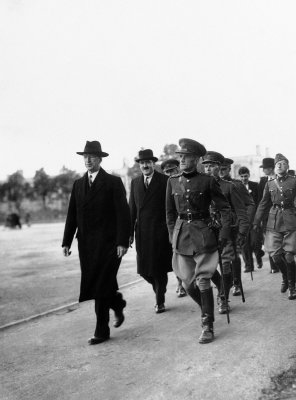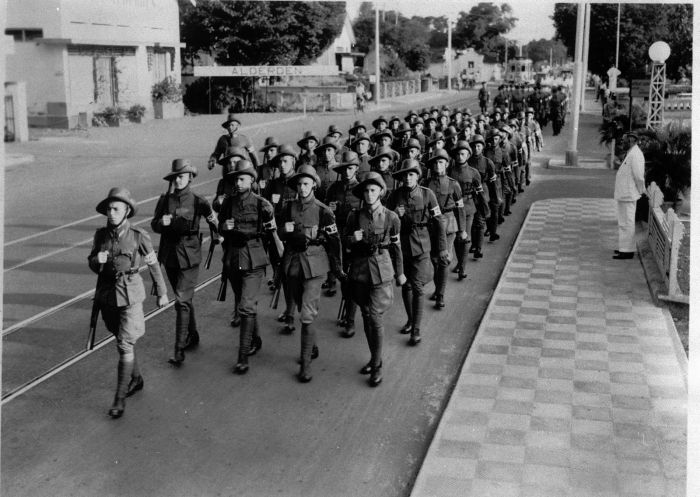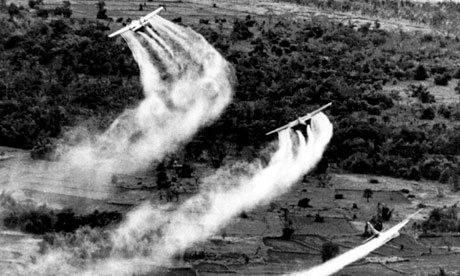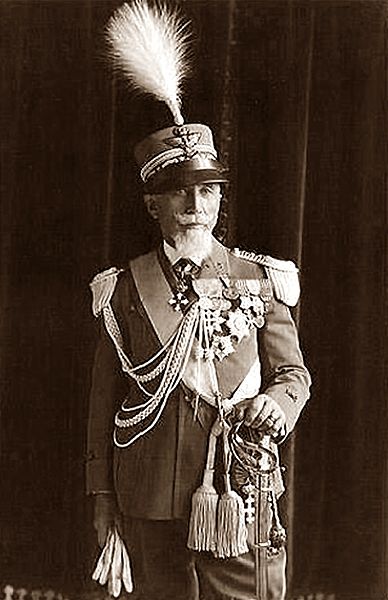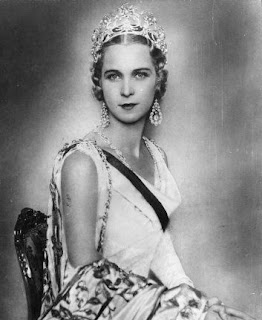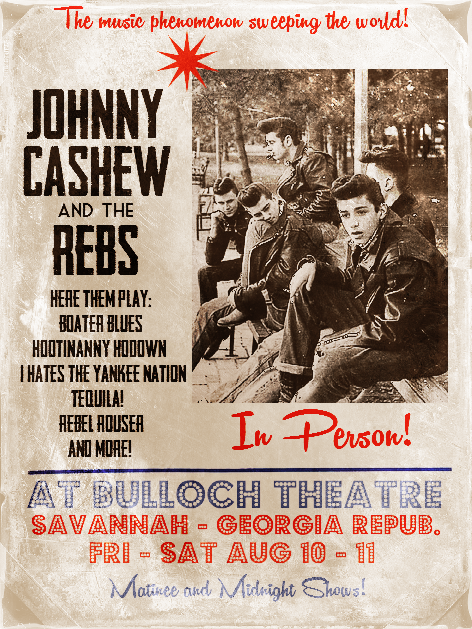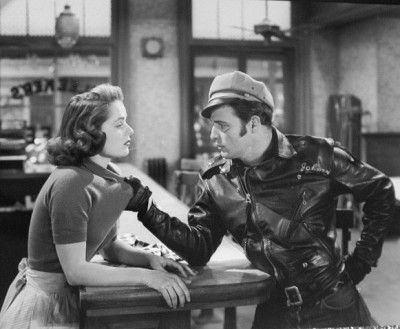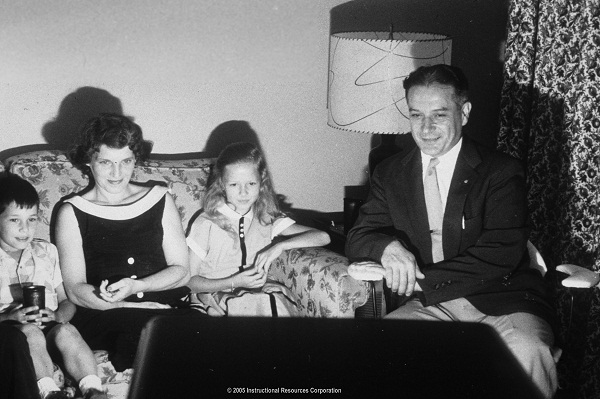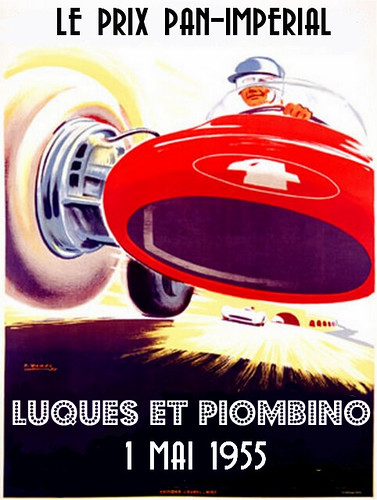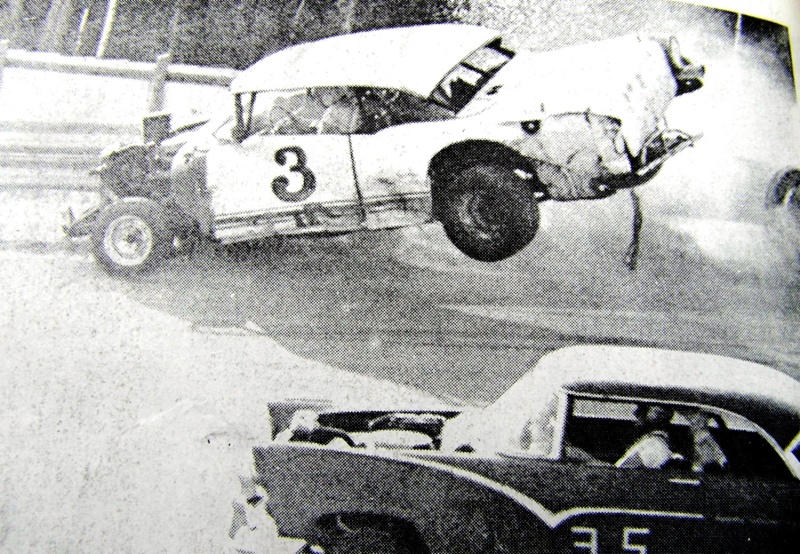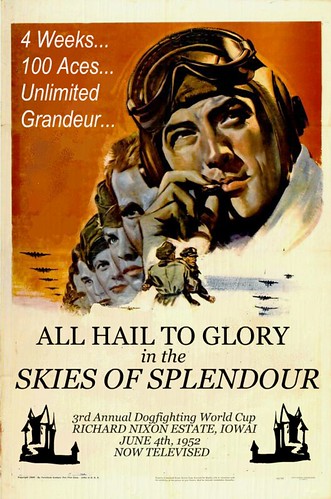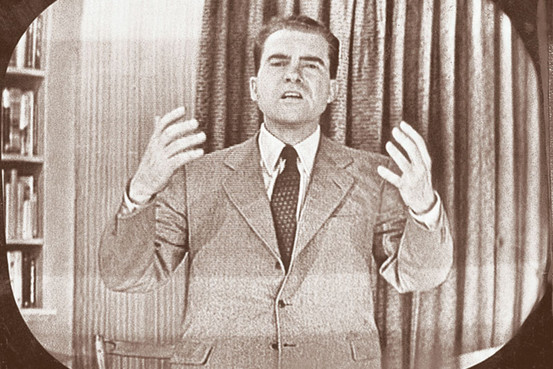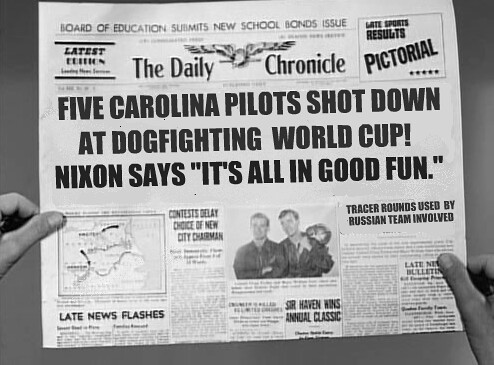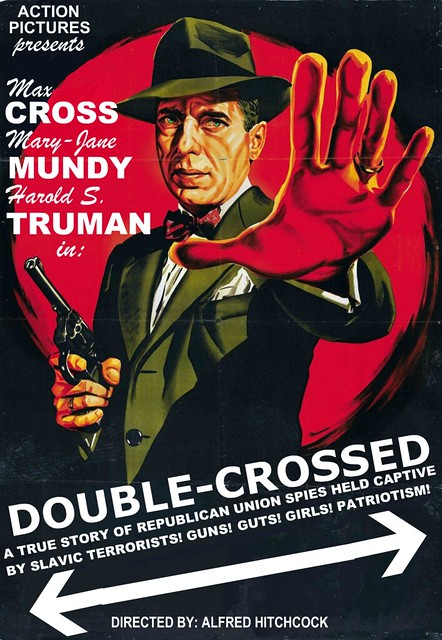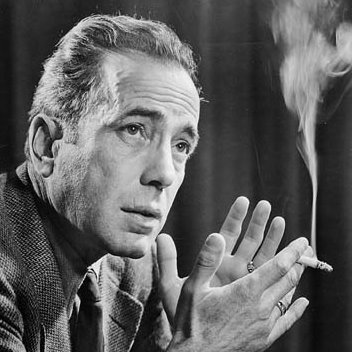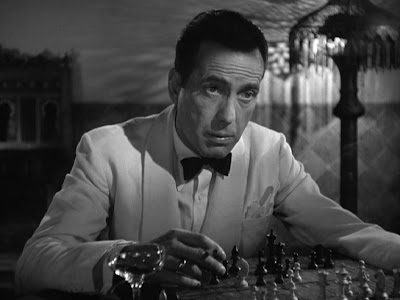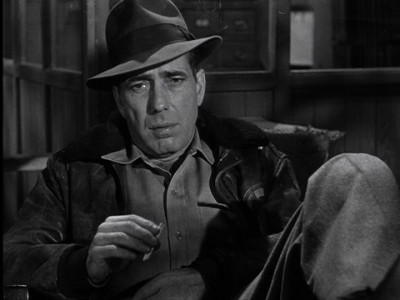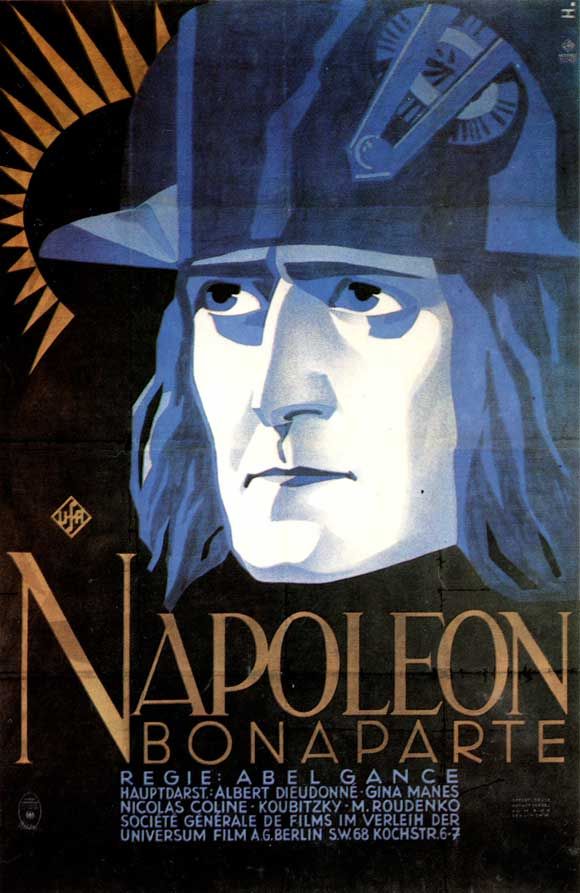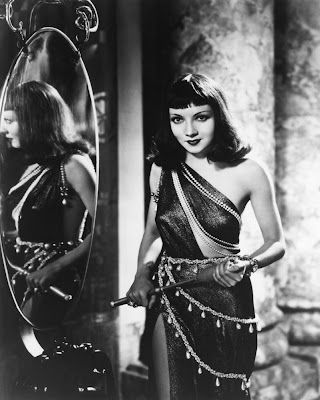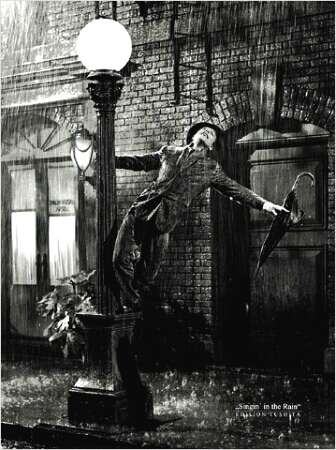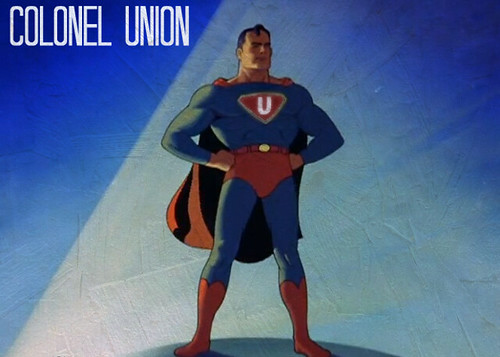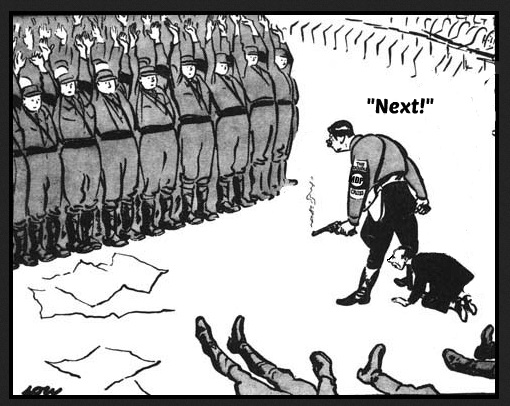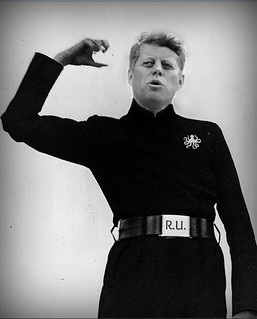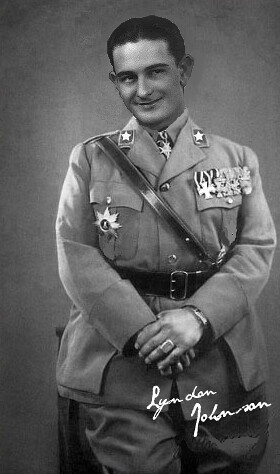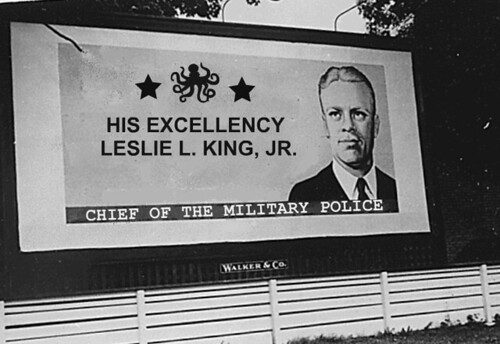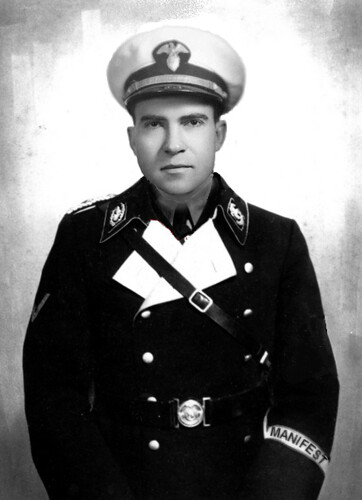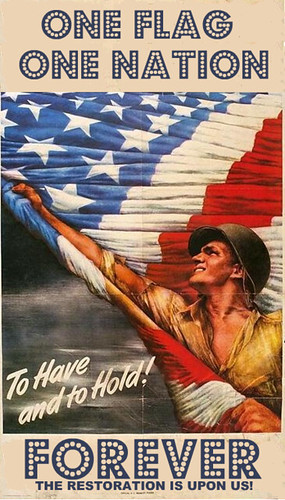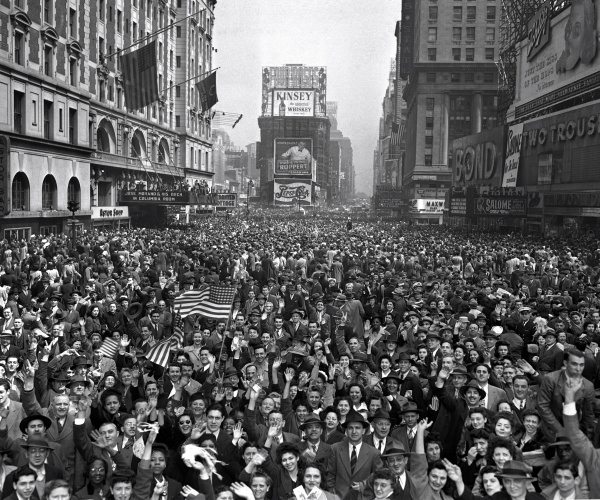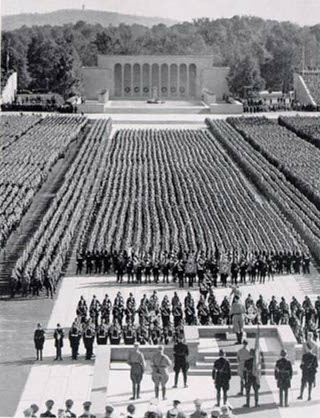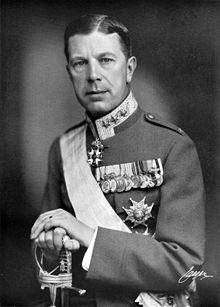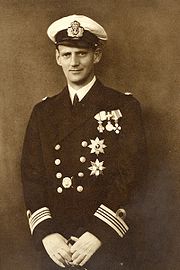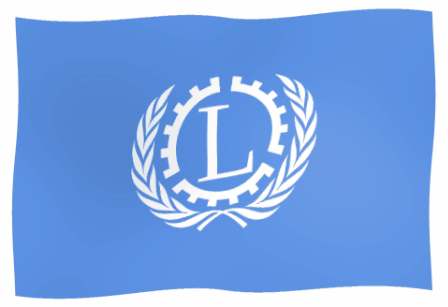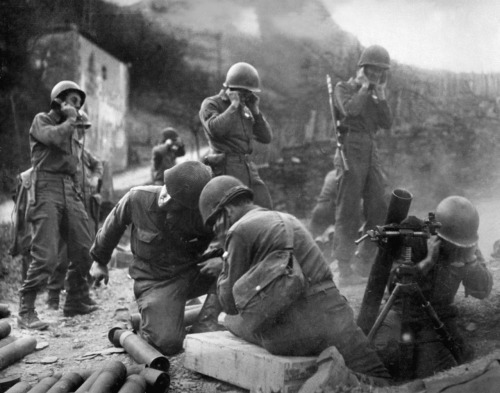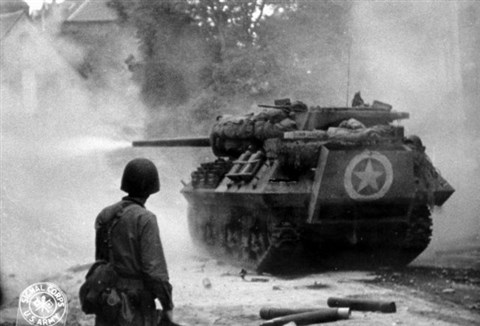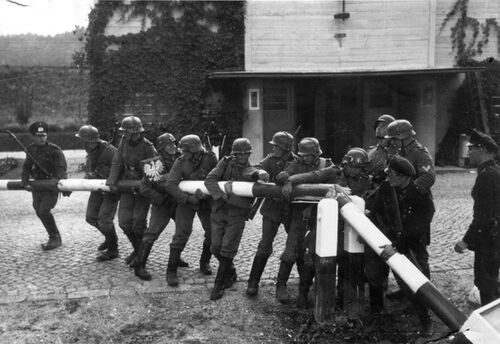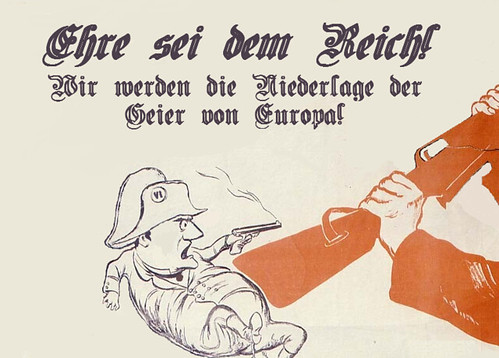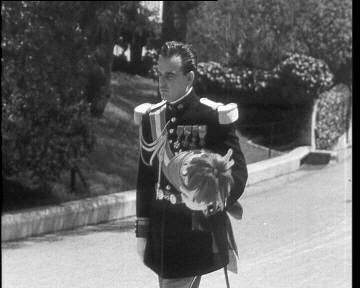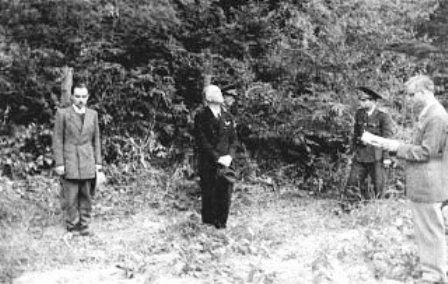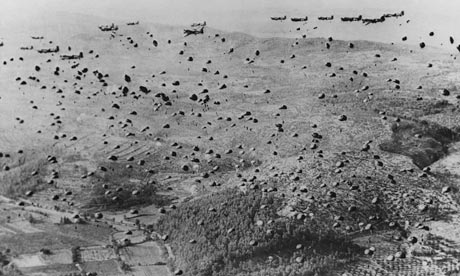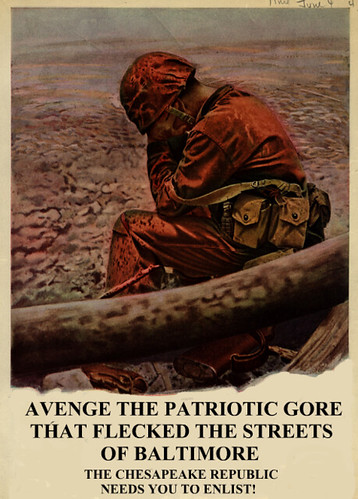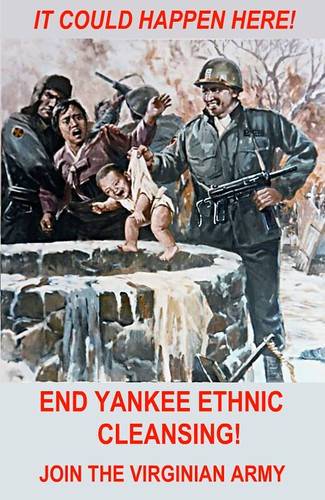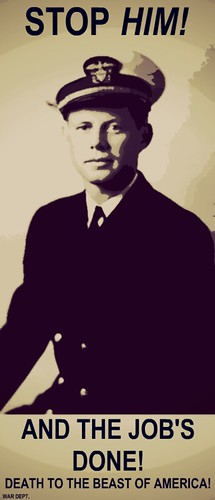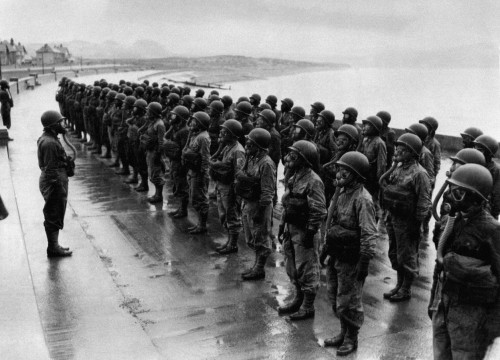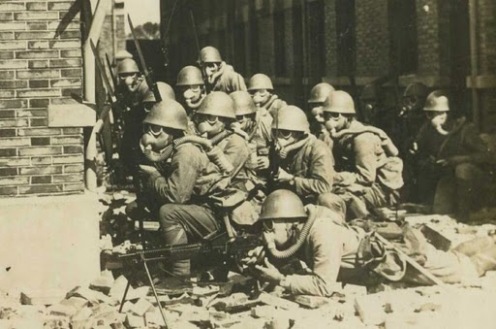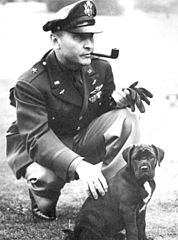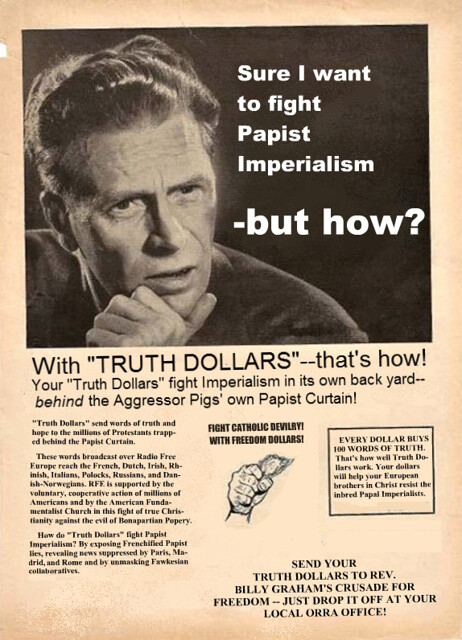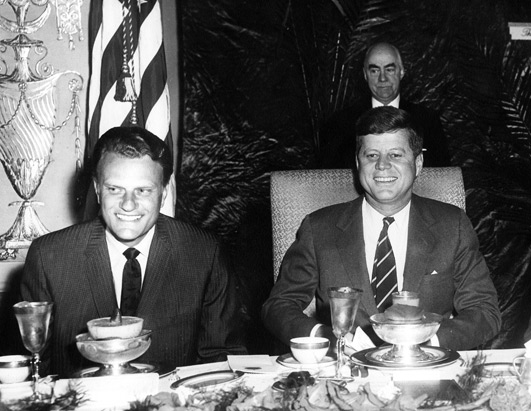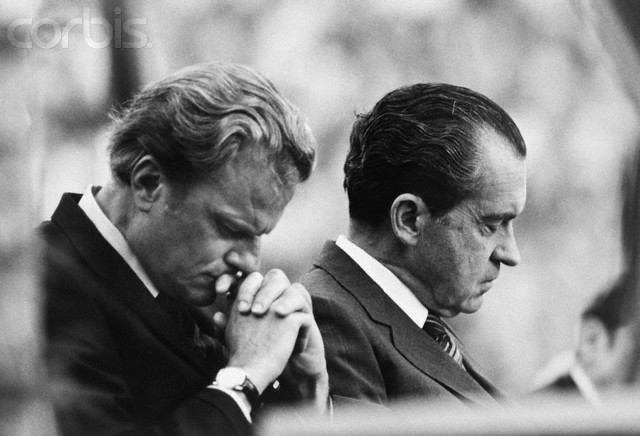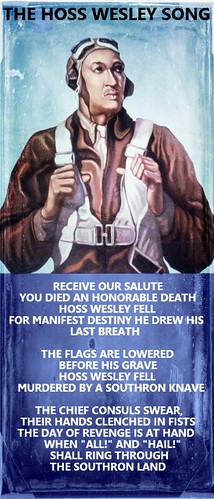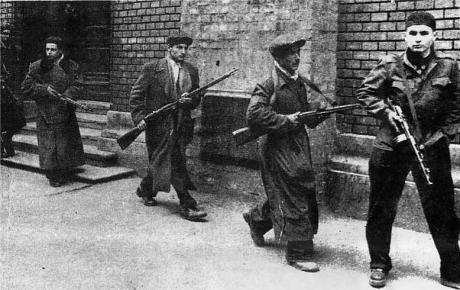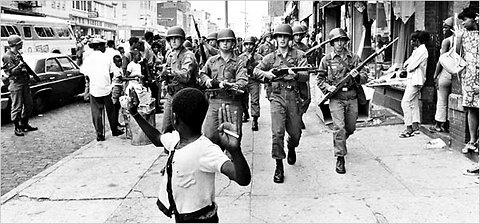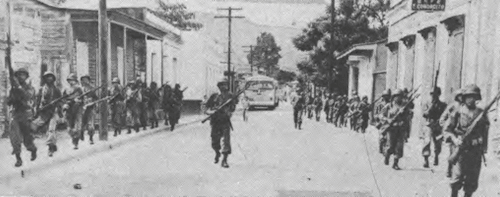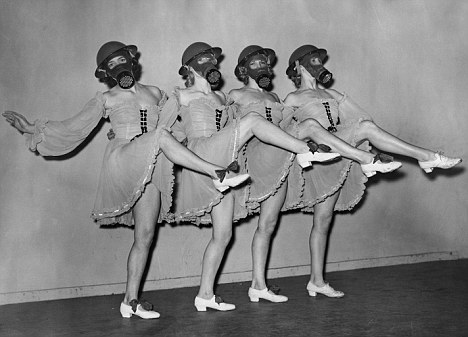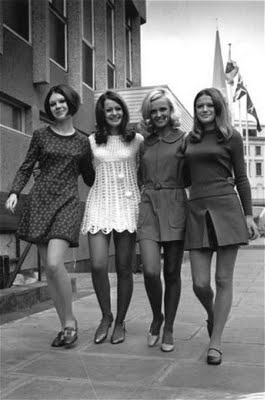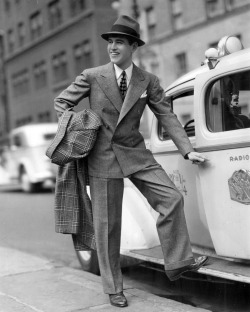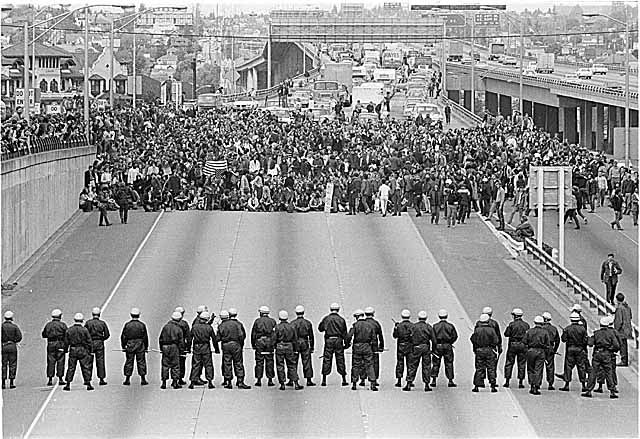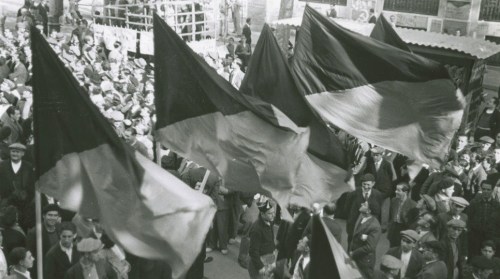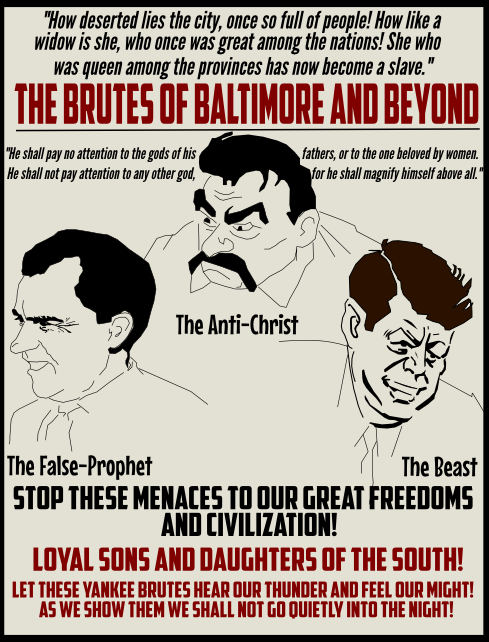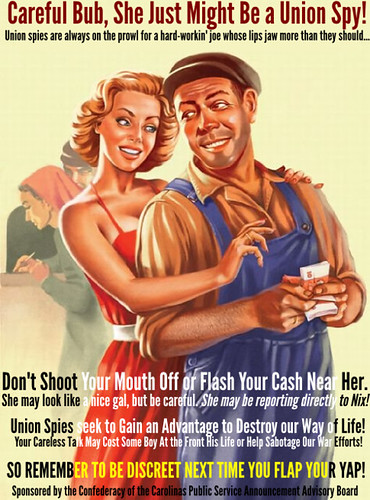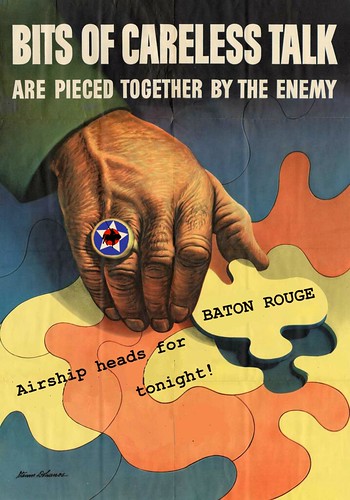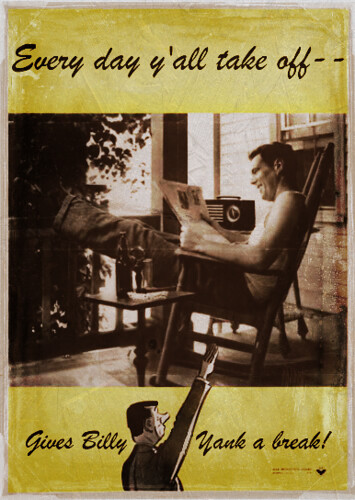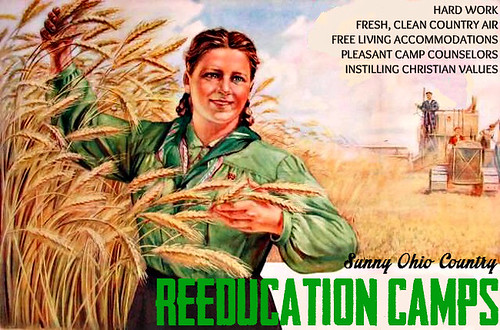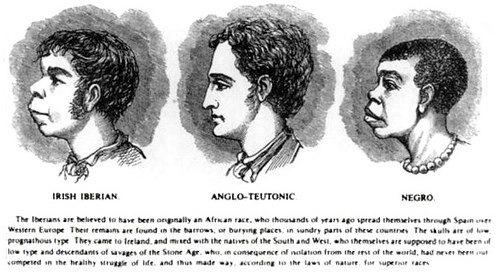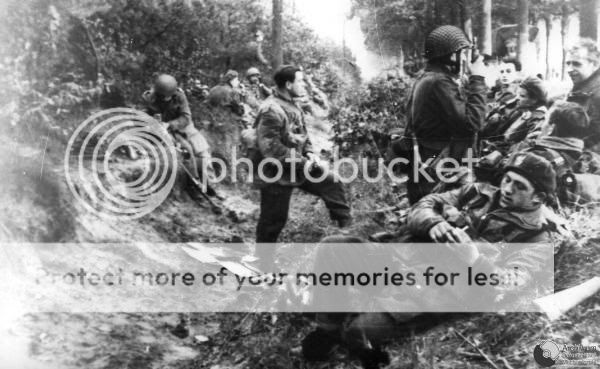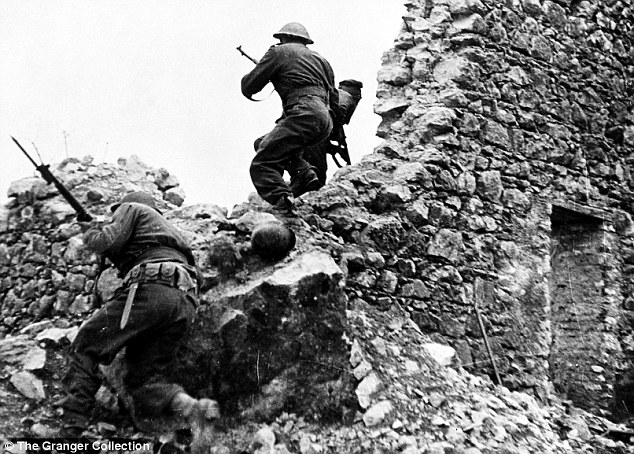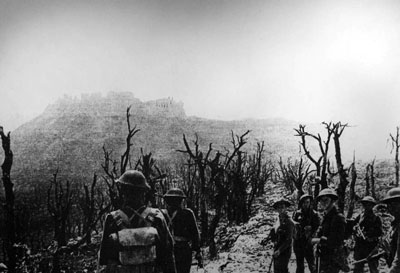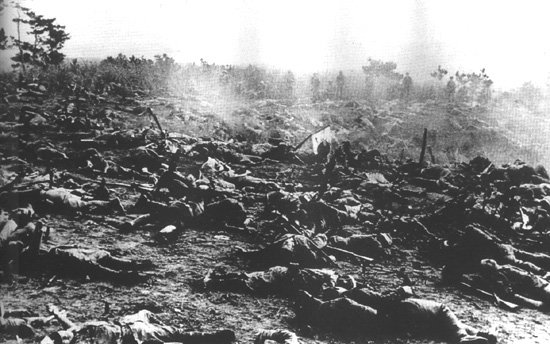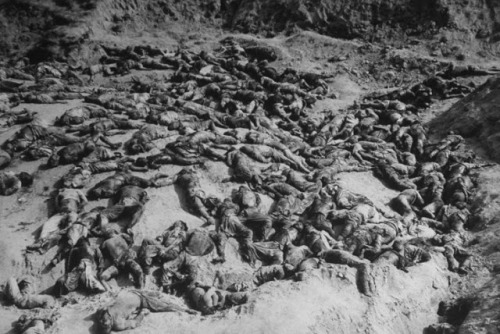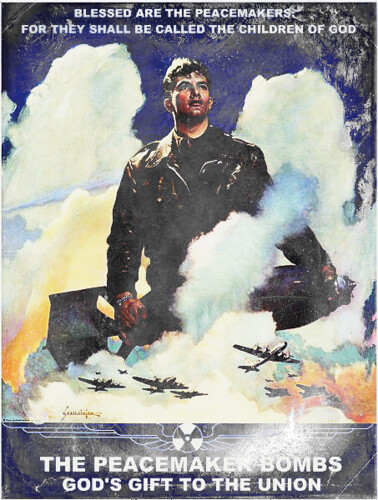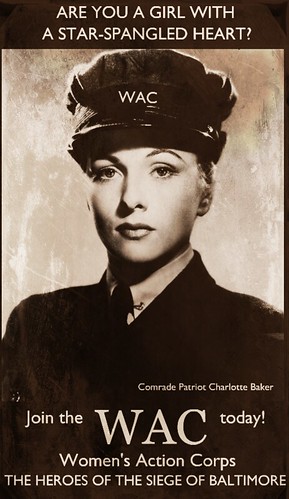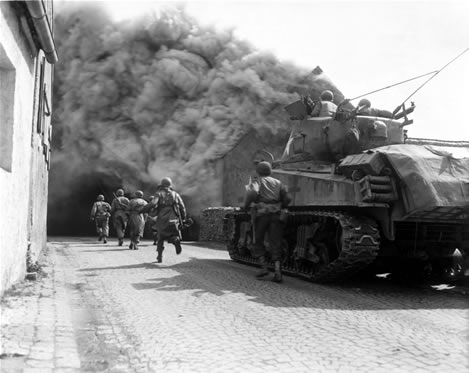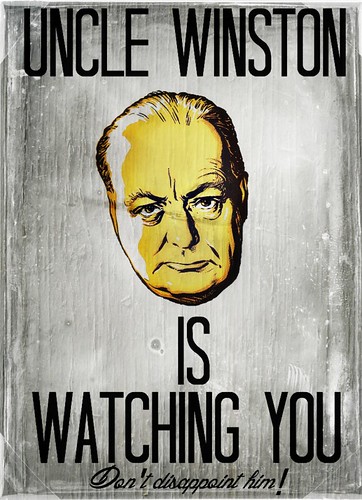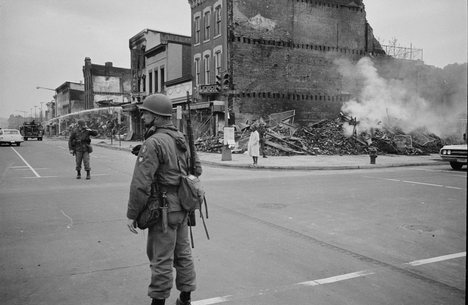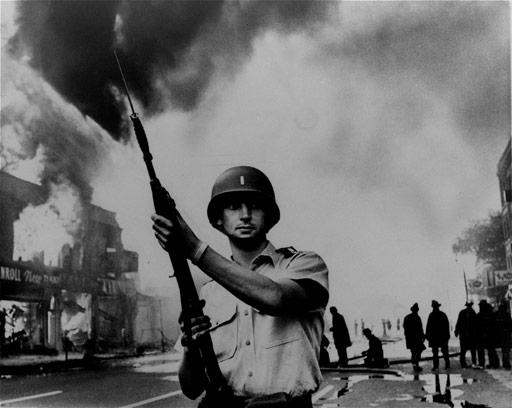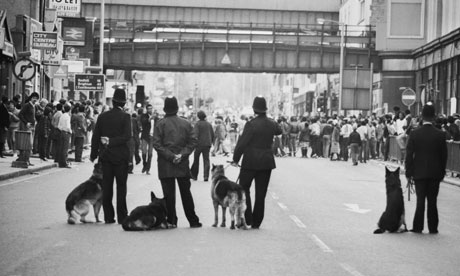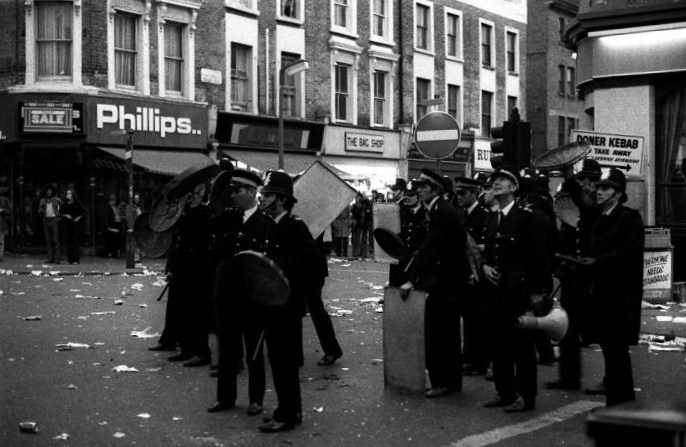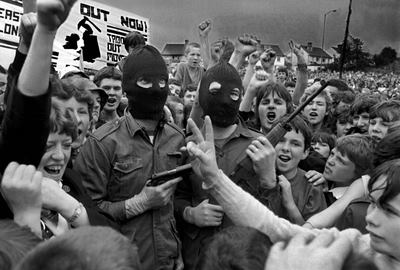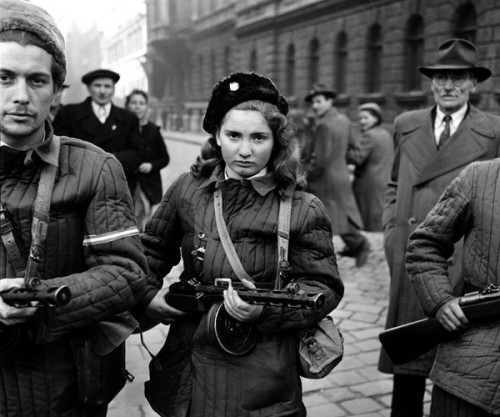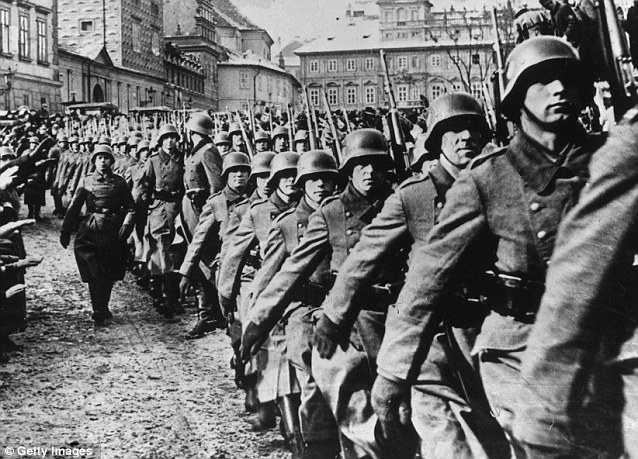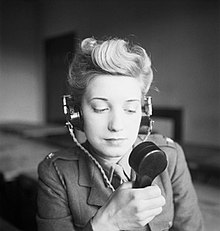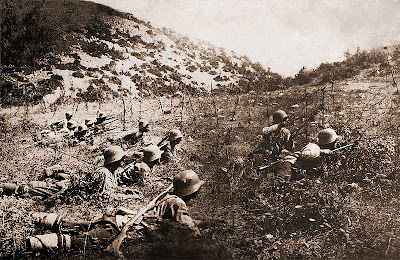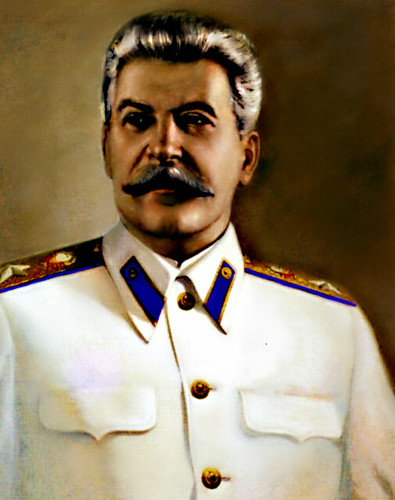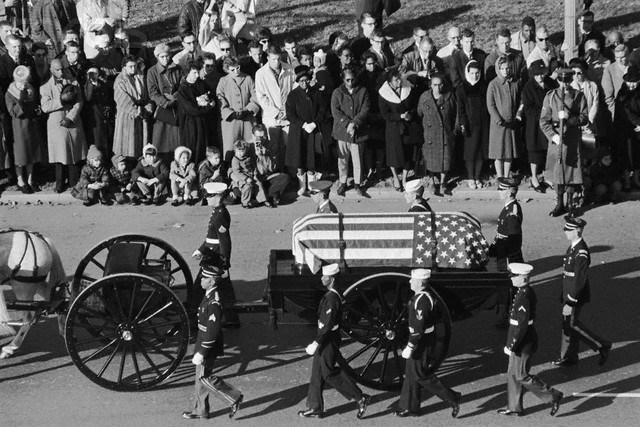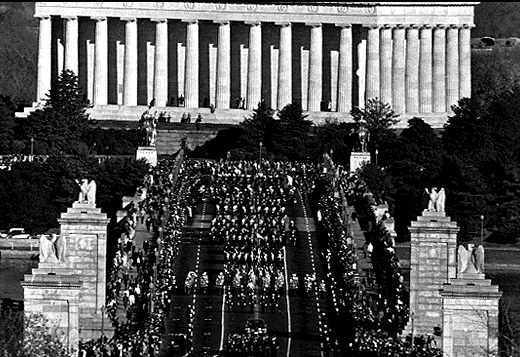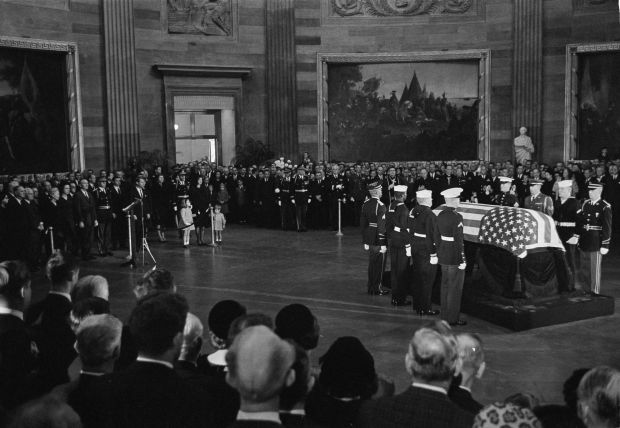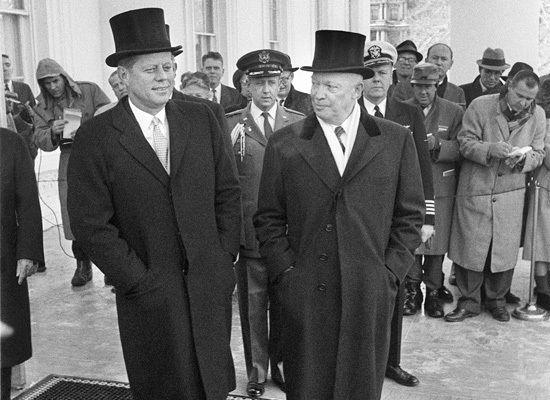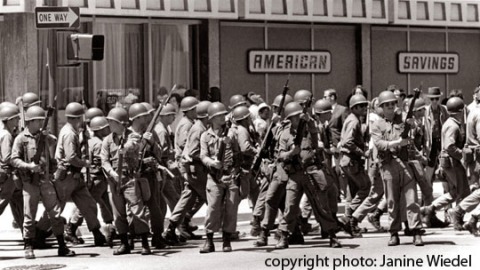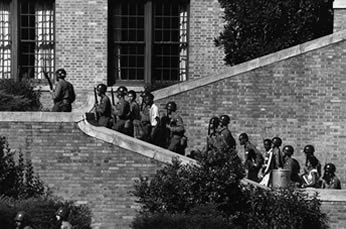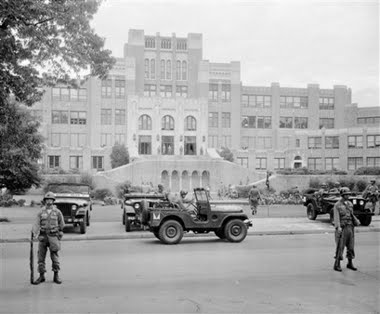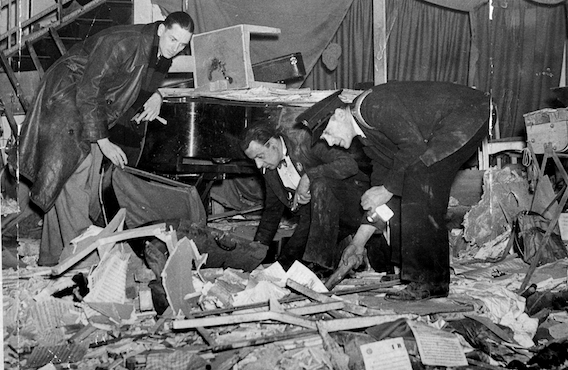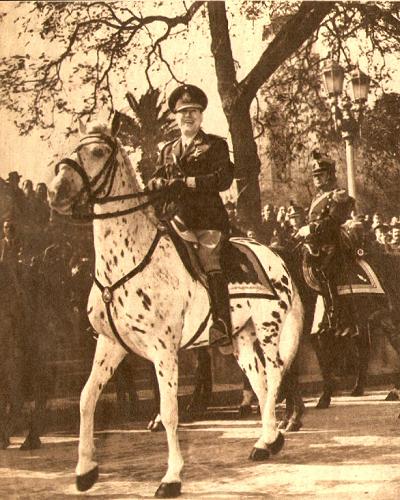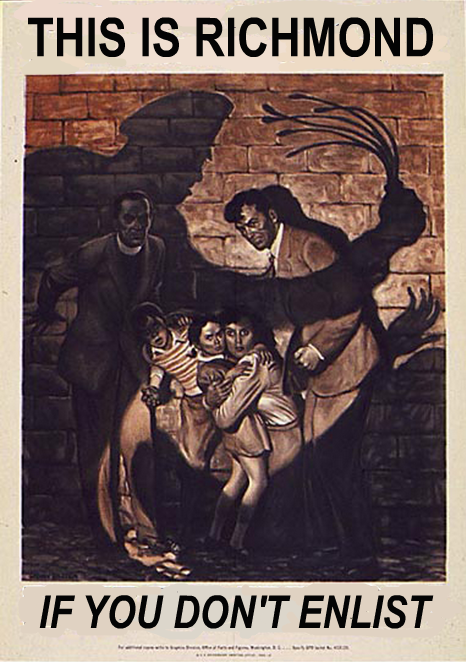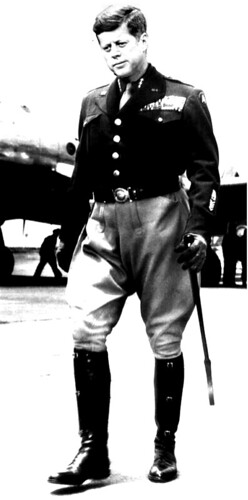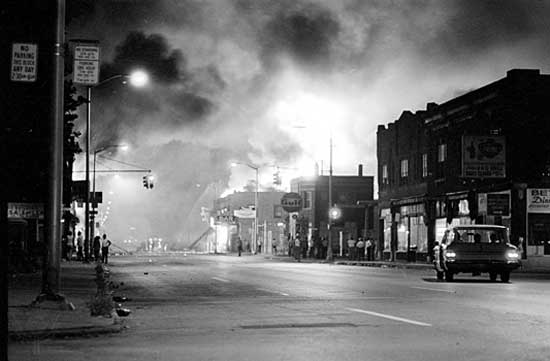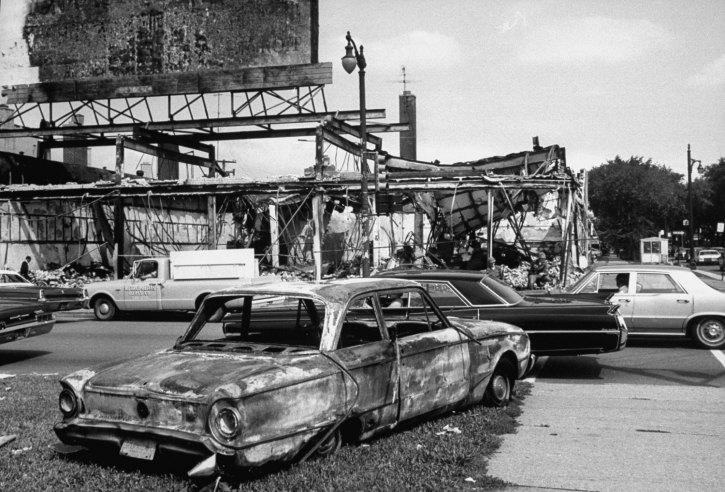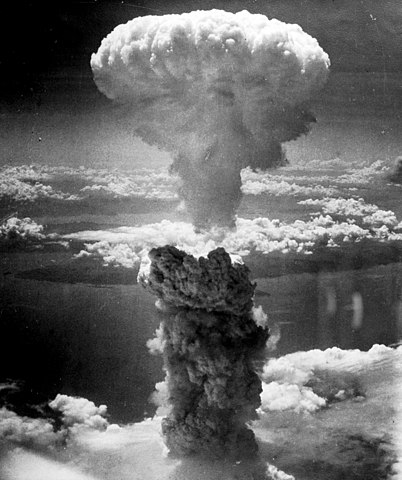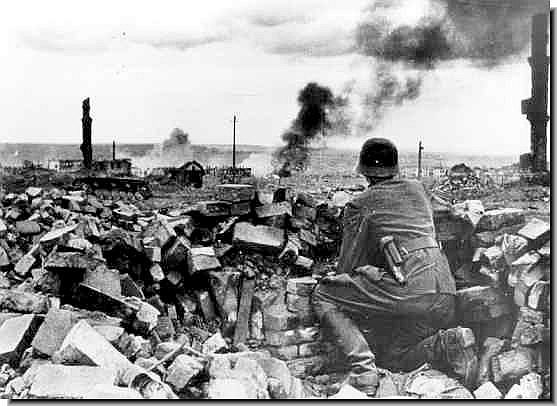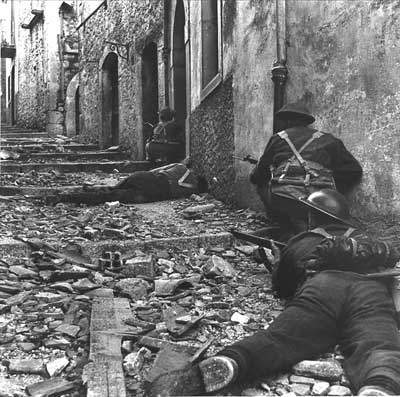WINSTON THE BEAR
-THE RISE OF THE ENGLISH CUSTER-
"The Twentieth Century will be known as the Century of Fascism!"
-Winston Churchill
The cigar-chomping "Bear of England," Winston Churchill, was born on November 30th, 1874, in Woodstock, Kingdom of England. He was born just in time to see the Royal Family finish its spiral into the loo of history, thanks to the Prince Victor debacle. Winnie's mother was an American, Jennie Jerome, and his father, Randolph Churchill, had been the one to declare the Commonwealth of England in 1892. Randolph was a moderate aristocrat, but Jennie was a fascist sympathizer. In an effort to make sure her son got a proper Protestant education away from the unrest and violence of the decaying Kingdom, she sent Winston to colleges in the Union in 1890, where he stayed until the abolishing of the monarchy in 1892 and the ensuing return to law and order that made England hospitable again.
Young Winston's roommate during his stay at Shicagwa University was, as mentioned before, none other than future Custer Youth Brigade Headmaster-Marshal Calvin Coolidge. It had been "Cool Cal" who had convinced Winston to go to the Shicagwa Coliseum to hear key members of the MDP speak about the glory of fascism. That was the day when the young Englishman knew he wanted to become a politician.
Upon getting back to England, Winston joined the Army, and he was among the first English troops to march in the 1902 Cornwall Reclamation, when Imperial troops finally gave back the occupation zone they had held since the Napoleonic Wars. By 1920, Churchill had become a major and had participated in an English volunteer brigade during the Second Mexican War, fighting under his old classmate Calvin Coolidge. By 1925, he came out in public as a fascist and pushed for a fascist government like Scotland was adopting at the time. His father had died in 1918, and the economy had stagnated since. He remarked in late 1925, "The people are ready in England; ready for fascism. All they need is one good push." In 1926, he formed the British League of Fascists, headquartered in Oxford. Once the 1930 elections rolled around, the hugely unpopular Scottish-born Ramsay MacDonald lost in a landslide to Churchill. Churchill took power as President of the Commonwealth with Jeffrey Shepherd, a high-ranking officer in Colonel Goodyear Enterprises English branch, as his Vice-President. Almost immediately, they dissolved the National Congress and, backed up by their most loyal followers, declared the Commonwealth Constitution to be null and void. This was not done without protest. Europe panicked, and the Empire backed Austen Chamberlain, a wealthy English aristocrat who was assembling an army in Cornwall. Austen was a monarchist who secretly desired to conquer Scotland and England and become the first "Emperor of Britannia." However delusional, he was considered a better alternative than Churchill and Scotland's Greer. Thus, the Second English Civil War began.
In early December, 1930, the first skirmishes broke out, and on Christmas Day Chamberlain's 8,000 strong forces started a march to London. Imperial troops made up at least 50% of his forces, and almost all of his equipment was straight from Paris. Churchill countered, bringing 10,000 fascists to meet them, including several Union regiments. On January 3rd, 1931, the Battle of Farnham took place. Over 2,000 died before Chamberlain withdrew to Basingstoke. But just as he thought he had escaped to regroup, his tired forces were attacked from the north by a Union army 3,000 strong, including several airships. The monarchist army was torn to bloody shreds as the remaining men ran for the hills. The conflict would go on for another year, but everyone knew Chamberlain's cause was hopeless. One May 1st, 1932, surrounded by enemy forces, Chamberlain threw himself into a gunfight in the streets of Taunton, in which he was riddled with bullets and then hanged upside down at a gas station, where all could come and desecrate his body. Churchill had won.
Citizens of Cornwall, the hotspot of monarchist sympathy, return home to find their village leveled by fascist artillery as payback for their support of Chamberlain
American troops advance through no man's land near Bristol, mid-1931
Scottish gunners fire on monarchist positions near Devizes, March, 1931
In the end, over 100,000 soldiers and civilians died in the Second English Civil War, but when the smoke cleared, the survivors clearly supported Churchill (most Englishmen outside of Cornwall already did, and regarded Churchill's enemies as foreign invaders). In fact, it has been said that had Chamberlain and the Empire not tried to overthrow him, Churchill might not have been nearly as successful as he was. The war made him a hero.
Riding on the wave of his victory, he offered Wales a chance to join the new English Republic. Wales had been socialist for decades, and had also been struggling to make it in recent years, with one economic recession after another. In 1936, they finally agreed, and English Lion Landships came rolling over the Welsh border in a peaceful annexation and securing of the country. Several hundred Chamberlain supporters had fled to Wales years earlier, and now Churchill's State Security (SS) tracked them down and executed them for treason. Welsh citizens partied in the streets with English soldiers and burned the flags of the Tripartite Empire and its allies, especially Ireland. Across the waters, King Dominic III of Ireland brought his parliament into an emergency session to discuss the breaking news. Ireland deployed its navy and did several exercises with the Imperial fleets around the Isle of Man and Fort Scotia. Scotland fumed, and almost demanded the Bonapartes leave their border fort between Scotland and Ireland. In the end, things cooled down a bit and everyone accepted the current situation, but the Imperial fort on Scottish soil would prove a source of future headaches.
SS men arrest monarchists in Wales, 1936
An English sailor kisses a Welsh woman during the Annexation of Wales
In the end, Churchill had solidified his control over England and Wales, and his close friend Greer supported him in the south whilst their mutual friend Joseph Steele supported them both. By the end of the 1940s, the Union, England, and Scotland were making plans for something...
big.
First Chief Consul Steele and Second Chief Consul Roosevelt meet with President Churchill in London, 1947. By this point any remaining hard feelings the Union had toward England from the Revolutionary War and the War of 1812 were all but history.
THE EARLY YEARS OF
THE OSWALD BROTHERS
1917 - 1941
Ex-mobsters Charles and Robert Oswald in Aeroforce uniforms circa 1945
On May 29th, 1917, in an Inferior ghetto in Shicagwa, John Fitzgerald Kennedy was born. His father, Joseph Kennedy, and his mother, Rose, were Irish and devout Catholics employed by Colonel Goodyear Enterprises as factory workers. As a young boy, "Johnnie Boy" and his older brother Joe ("Junior") roamed the streets as petty thieves. The other children (Rose, Kathleen, Eunice, Patricia, Robert, Jean, and Teddy) disliked the two boys and refused to do anything with them.
It was on a quiet day in the ghetto, on April 4th, 1924, that seven year-old Johnnie was out for a walk. Unwittingly, he stumbled into a "middle class" neighborhood of Shicagwa. He saw, through a hole in a fence, a young boy playing teeball in a backyard. Johnnie was a baseball fanatic, and it was his favorite thing in the whole world. He called over to the other boy and the other boy let him through the gate. After all, he had no idea Johnnie was an "Inferior" who it was illegal to hang around. The boy introduced himself as Leslie King Jr., age 11. The two played ball for an hour without any problems... until a brown-colored staff car pulled up out front of the King house. Jackboots clicked on the driveway as men dressed in ORRA and Custer Youth Brigade uniforms got out and started walking toward the children.
The youngest of the officers, a 16 year old CYB corporal named Lyndon Johnson, came up and without a word picked up and threw Kennedy to the ground. "That's what you get for not playing with your own kind, Inferior!"
As it turned out, a neighbor across the street had recognized Kennedy as an Inferior and called up his local ORRA office to let them know. Another officer, Jack Williams, told King to go back inside his house. Williams then picked up Kennedy from off the ground and then screamed at him for about eight minutes, warning him to never, ever, ever play with his "Betters of Society" again. As Kennedy looked on in shock, Johnson joined in, telling him, "You filthy Irish aren't going to spread your disease among our future CYB members! Stay in the ghetto where you belong, or you and your whole family will be shipped out to Ohio Country and you'll never be heard from again!"
That day traumatized John F. Kennedy, who had had no real understanding of the segregation in the Union before then, and it remained glued in his memory forever. But it wasn't the abuse that upset him; starting when he was around ten, Johnnie began to see his life as unfair because his family was Inferior. He wanted to be a Better. By the time he was 13, he was thoroughly planning out ideas for escaping the ghetto by any means necessary. As an older teen, in the early 1930s, Johnnie began doing work for the local mobs, and even met infamous crime lord John Edgar Hoover on one occasion. It was only natural that when Kennedy and his brother became adults that they started running absinthe for Hoover's syndicate. For years, Kennedy managed to earn quite the arrest record but the police and ORRA were never able to implicate him in anything major, so he usually walked after a few days in prison. He ran into CYB (and later ORRA) Officer Johnson once more in 1935, when it was Johnson who arrested and turned him into authorities for absinthe possession.
In 1939, when he was 22, a large accidental furnace fire burned down the Shicagwa Police Department and the neighboring ORRA office, obliterating his and Junior's criminal records and all mugshots and information on them. After plotting over it with Junior, they agreed that this was the perfect moment to escape the slum life...
***
The two crafty brothers took up a job for the local mob to dispose of the bodies of two murdered Irish gangsters. They put them in the Kennedy family home under the cover of night and then silently strangled their family in their sleep. Then, they poured absinthe and gasoline all over the ratty house and lit it on fire. With that, the Kennedy family was legally dead. The two dead gangsters would stand in for Johnnie and Junior once authorities investigated the fire. All that was left of the clan was Johnnie and Junior, and they were legally dead.
Now, the brothers needed new identities. They stopped at the home of a forger and ordered two completely fake identities. John F. Kennedy took the names of his two favorite baseball players, Philadelphia Yankees pitcher Charles "Lefty" Lewis and Iowai Injuns catcher Mike Oswald, and combined them into the Scottish name "Charles Oswald," with "Custer" thrown in as a middle name. Junior became "Robert William Oswald." Then, they murdered the forger and burned down his lab. With that done, the Oswald brothers were now former members of their local Custer Youth Brigade and currently upstanding members of the Betters of Society. In 1941, both brothers joined the Union Aeroforce. Neither of them could have imagined what fate had in store for them...
THE MIDDLE EAST
Part Two
EGYPTIAN EMPIRE
The Egyptian Empire was by far the greatest power in the Middle East by the mid-20th century. In a relatively short time the former Ottoman puppet state had grown to become a major industrial, economic and military power in the region, and by the end of the century, it would grow to become a power on the world stage. Egypt's first years of independence were quiet, and were a time of consolidation for the newly independent nation. Then in 1895, Egypt's first Sultan-Emperor Isma'il I died leaving his 21-year-old son Abbas as Sultan-Emperor Abbas I of Egypt and Sudan. When this happened, many in the Egyptian government, Royal Council, and military were highly worried and saw a crisis on the horizon. However, Abbas I was an intelligent young man, and almost immediately he surrounded himself with highly competent advisers from the Royal Council.
In addition, Abbas I knew that Egypt was but a young backwater, and therefore sought to strengthen his nation militarily, politically, and economically. Firstly, a number of reforms in the military were passed during the late 1890s and 1900s, and with the help of new weapons, such as the Eiffel Arms 1893 Bolt-Action Rifle bought from the Tripartite Empire, the Egyptian Military grew to become the strongest army in the Middle East by 1910.
It was also during this era that (as a result of buying weapons from the Tripartite Empire) Egypt became closer with the Empire, and the Empire would become Egypt's main Western ally in the years to come. The reasons for this friendship were that the two nations had many similar goals in the Middle East, the Empire wanted more rights from ports in the Suez, which in turn brought trade to Egypt, and that the Empire's support of Egypt helped maintain a balance of power in the region. Starting in 1898, Egypt under Abbas I underwent a major series of reforms in the government, civil service, city infrastructure and public works, all reforms which were completed by the 1920s. Also, during the 1900s and through to the 1930s and beyond, Egypt looked increasingly to the West for modernization due to all the reforms already going through, those in the military inspired in part by the Empire's military, as well as to a lesser degree, the militaries from a number of other European nations. While the more conservative elements prevented a number of modernization reforms, most of the reforms were still pushed through anyway, due to backing from Abbas I himself, who had most of the authority over the Egyptian Assembly in the first place.
Another one of the biggest developments in Egyptian history during this period was the construction of the Suez Canal. For years, the Western Powers, particularly the Tripartite Empire, had desired to build a canal in the Suez to better connect their far-flung colonial holdings. However France-Spain (later the Tripartite Empire) was too focused on other events in Europe, Africa and Asia to conquer the Suez from Egypt and build the canal. Other major powers just didn't have the influence and power in the region to do so. Then, beginning in the late 1910s, Sultan Abbas I saw the creation of such a canal as a major business opportunity and a way to increase trade, commerce, and relationships with the west. Abbas I went into an agreement with the Empire's government and the newly established Imperial Canal Company in the 1920s, and construction on the Suez Canal began on October 15th, 1922. It was finally completed on December 29th, 1931, greatly improving traffic to and from the European nations and their respective colonies, and it also made the Egyptian Empire an increasingly wealthy nation and a crossroads between the Western and Eastern worlds. After all these developments, by the 1930s, Egypt was a fully industrial and modern regional power on the same level as other Western/European Powers.
The next major challenge for Egypt came in the late-1920s through to the mid-1930s, when Arab, Maronite, Assyrian, and Jewish refuges flooded into northern Egypt and Sudan from the Turkish Levant. While Conservative elements in the country called for their expulsion and a few pogroms broke out in some major cities, Egypt was now a modern and nominally progressive power, and in recent decades relations between Muslims and Christians (for example, Coptics) in Egypt noticeably improved. Abbas I had come to side with the more progressive and reform minded elements in the country, and in the past years had openly ordered the protection of Egyptian Christians and other "Peoples of the Book". While liberal social reforms in Egypt would not be implemented for years to come, this was a good start. Abbas I openly supported protection and housing for the refugees and in a speech made in Cairo in 1933 stated his agenda "to free the peoples of the book from Turkish tyranny and a false Caliphate". Terzi Pasha was furious, and after these events, tensions between the Egyptian Empire and the Islamic Republic of Turkey only escalated, with a military buildup going on in both nations during the 1930s. Finally in October of 1938 a series of border skirmishes began on the Eygpto-Turkish border between the two nation's armies. The skirmishes went on and off for months, with Egypt officially declaring war on Turkey on May 12th, 1939. Egypt already had a superior army, with recent landships and aeroships being bought from the Empire, but the Turkish Army, using Prussian bought weapons, put up a good fight at first. A stalemate at an ever-changing battle line outside of Jerusalem lasted for almost two years, until Egypt finally broke through in November of 1940. Months later, from February 4th-9th, 1941, the Egyptian Army marched into Jerusalem and forced the Turkish army to retreat after the grueling-but-climactic Battle of Jerusalem (the event became an inspiration for pop culture the world over, with French director Marcel Laval's 1946 film
Terre Sainte and Virginian director Hubert Stockton's 1952 film
Jerusalem both becoming instant classics). It was also during the stalemate and famous battle that many foreign troops rallied to the Egyptian cause. "Catholic Brigades" from Europe and the Americas and Russian-led "Orthodox Legions" became the most famous, as well as the International Jewish Bridges (IJB) made up of Jews from Europe, the Americas, and Middle East. Those Jews rallied behind Egypt's increasingly friendly relationship to Jewry to fight for the liberation of the Holy Land, some hoping for an eventual creation of a Jewish state. These brigades captured the world's imagination, with a number of films, novels and comic books based on their exploits being made worldwide during the 1940s and 1950s.
Egyptian Volunteer Infantry in a trench outside of Jerusalem, February 4th, 1941
After the Battle of Jerusalem, Egypt would have the upper hand in the war. Through mid-1941 to early-1943, the Egyptian Army gradually conquered city after city in the Levant, with the help of a number of local revolts by minority groups against Turkish rule, some directly supported by Egypt. By mid-1943, the Turkish Army, weakened by the constant loses, had completely lost control of the Levant to either the Egyptian Army or to the variety of different rebel groups. Then on July 1st, 1943, came another climactic battle: the Battle of Antioch. The battle itself, between the Egyptian and Turkish Armies, the later led personally by Grand Leader Terzi Pasha,(himself a former Army officer) was a brutal and bloody stalemate. However, the battle was significant for the death of Terzi Pasha, who was shot off of his stallion by an Egyptian sniper.
After Antioch, the Turkish government was in near chaos, with Army General Barış Bardakçı coming to power thought a violent coup just a week after the battle. Bardakçı refused to surrender to the Egyptians at first but finally did so on October 30th, 1943, seeing no other way out of the war. The Treaty of Damascus, signed on January 1st, 1944, officially ended the conflict. The Treaty forced Turkey to cede it's land in the Levant to Egypt as an occupied territory, and for Grand Leader Bardakçı to renounce his title of Caliph of Islam. The Egypto-Turkish war humiliated the IRT, but was a great triumph for the Egyptian Empire, and showed that it was truly a force to be reckoned with. The war also showed the power of new military tactics and technology, and was in many ways a preview for the coming World War.
Abbas I was hailed as a hero back in Cairo. Nevertheless, Abbas I died less than a year later on December 19th, 1944, aged 70, and was succeed by his son, Prince Isma'il Abdel Moneim, who became Sultan-Emperor Isma'il II (*). It was under Isma'il II's reign, in 1948, that the Occupied Levant was restructured. Two new nations were established; the Assyrian Republic, a nation for the Assyrian people, which was militarily neutral but under Egyptian protection, and the Kingdom of Syria, a state created due to the fact that Egypt did not want to risk annexing a large amount of Christian land, and also to create a nation in which both Muslims and Christians, be they Maronite or Orthodox, could co-exist without sectarian violence. The Kingdom of Syria was made an Egyptian puppet state, with Prince Ghazi bin Faisal of the progressive Arabian Hashemite Dynasty being made the nation’s first King and Ghazi I of Syria (**). The rest of the Levant, the majority Arab and Muslim Palestine, was annexed to the Egyptian Empire.
* IOTL Isma'l II was named Prince Mohammed Abdel Moneim. His given name is different IITL due to butterflies.
**IOTL King Ghazi I was the second King of Iraq. ITTL, he does not die in 1939 as IOTL, and lives a much longer life.
Sultan-Emperor Isma'il II
Flag of the Assyrian Republic
Flag of the Kingdom of Syria
King Ghazi I of Syria
It was also during Isma'il II's reign that Pan-Arabism grew increasingly popular in Egypt, due to the new Arab land won in the Egypto-Turkish War, and how Egypt was seen as standing up for Arab's living in tyranny under non-Arab rule. A number of successful new Pan-Arabist parties were established during his reign, and in 1951, Isma'il II publicly came out as a Pan-Arabist, giving more strength to the movement. That same year Egypt began to foster a closer relationship with the Arab Republic of Iraq, a relationship which would prove to have vital repercussions in the future. Isma'il II was also one of the many world leaders to attend Napoleon V's Funeral in Paris in 1950. Sadly, his reign would not last for many years longer. On October 16th, 1953, Isma'il II was assassinated in Alexandria by Harun Hakim, a crazed Egyptian Anarcho-Socialist.
Ismai'l II's thirty-one year old son succeed him as Sultan-Emperor, and became Sultan-Emperor Isma'il III. A crackdown on Anarchists in the country ensued afterwards. Aside from this, Isma'il III was a staunch Pan-Arabist and continued the Pan-Arabist policies his father had begun, with the Arab Republic of Iraq becoming an Egyptian client state soon after his ascension to the throne. With the continuation of said Pan-Arabist policies, and the nearby Kingdom of Arabia showing signs of further weakness, the idea of a "United Arab Empire" became more and more plausible.
Sultan-Emperor Isma'il III
THE ARABIAN PENINSULA
Flag of the Kingdom of Rashidi Arabia
During most of the first half of the twentieth century the Arabian Peninsula was a war torn, dangerous and all around troubled region of the world. In the late 1890s and early 1900s, one rising power in Arabia was the Emirate of Jabal Shammar. While originally an ally of the Ottoman Empire, under the reign of Muhammed I bin Abdullah and after the Tripolitanian War, the kingdom gradually turned more to Western Powers, especially the Tripartite Empire and Russian Republic. By 1900, Jabal Shammar had a more or less modernized army, made up mostly of Infantry. At the Treaty of Antioch ending the Tenth Russo-Turkish War, Jabal Shammar was, under approval from Western Powers, given the Hejaz region formally owned by the recently defunct Ottoman Empire. However this territorial concession would lead to many problems in the long run. The main rival to Rashidi Arabia was the Second Saudi State in the region of Nejd in southern Arabia, a strictly conservative Islamic state ruled by the House of Saud. Nevertheless, the country was a troubled and weak backwater due to constant infighting in the Saudi family. The Second Saudi State was finally conquered by Rashidi Arabia, at this point ruled by Amir Abdul-Aziz bin Mitab, in 1907. However, the many members of the House of Saud fled to the countryside, and soon started an insurgency against the Rashidi invaders, an insurgency supported by Ultra-Conservative Islamic clerics who disapproved of the Rashidi's more moderate view of the Islamic faith.
Another insurgency against the Rashidi's was led by the House of Hashim around Hejaz and Mecca, despite being allowed to have autonomy over Mecca after the Rashidi annexation. The two insurgencies lasted in Rashidi Arabia for decades, and raids, bushwackings and violent surprise attacks were all too common a sight in the barren Arabian deserts and cities alike. This made obtaining oil form Arabia, whether by the Rashidi government or by Western Powers, a dangerous and rarely executed venture. As a result, most of the world's oil had to be bought from nowhere else but the Republican Union, a fact many European Powers resented. Only in the early 1940s, when the Saudi and Hashemite insurgencies finally burned out, did it become safe to obtain oil from Arabia, but by this point it was too late and the R.U. had profited immensely from the previous and long-lasting turmoil in Arabia. Then, in the late 1950s, signs of instability showed once again, as pro-Saudi and pro-Hashemite militias were established by veterans of the old insurgencies. Not only that, but Beutelist, Distributive Socialist, Anarcho-Socialist, and even Islamo-Socialist rebel groups began to form in the Arabian cities and villages, these ideas themselves coming from years of increasing trade by the Rashidis with the West. A number of Ultra-Conservative Islamic and Pan-Arabist rebel groups formed as well, and Rashidi Arabia seemed poised for another civil war, a war destined to be more brutal then the last. A number of small scale, but violent rebellions soon broke out, and one local power, the Egyptian Empire, saw an opportunity to invade the country and bring order to the region once and for all...
Other states in the Arabian Peninsula, such as Kuwait, the Trucial States, Oman, Yemen, Qatar, and Bahrain, remained quiet backwaters. None of these states ever fell to Western Imperialism, with the possible exception of Oman, which lost a number of Islands and its possessions in Persia to Prussia during the four month long Prusso-Omani War of 1899 (a war waged by Prussia in an effort to increase its power in the Indian Ocean), although it was never conquered by Prussia and remained independent. The ideology of Pan-Arabism spread to some of these states, such as to Yemen and Kuwait in the 1940s, while it simply never caught on in the rest, such is in Oman, which was an Ibadi Islamic state and had no desire to unite with its Sunni neighbors.
